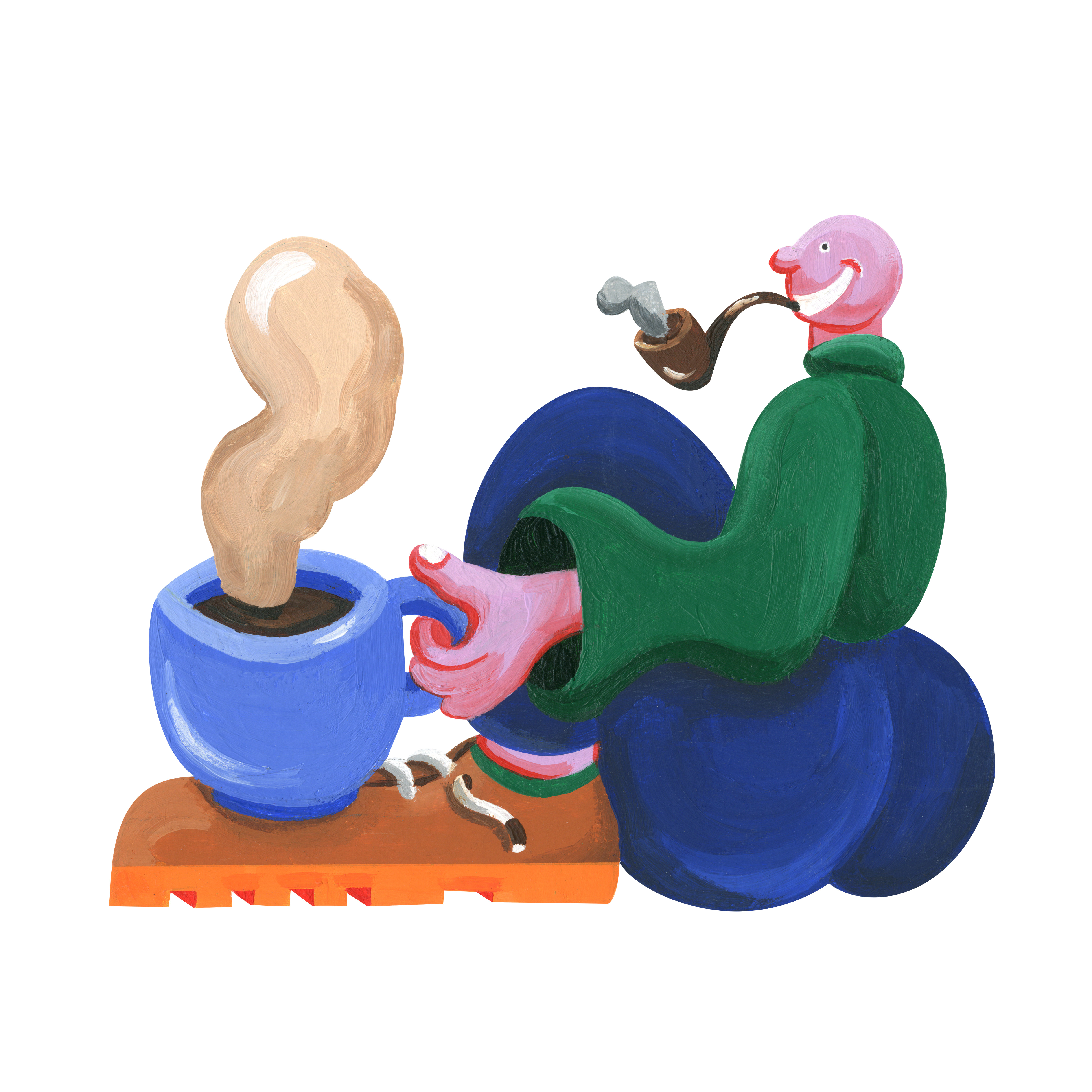Supper's Ready
Illustrated
Illustration and interpretation of the trippy 23-minute song Supper's Ready, by the band Genesis off their 1972 album Foxtrot.
You can read an interview I gave on this work for Classic Rock Magazine here:
Below is an explanation of my work's narrative, with selected stills from the comic.
Any reference to the lyrics will be in quotations. I will only highlight song references to other songs off the album Foxtrot, though the comic is filled with allusions to Genesis' whole oeuvre. I encourage sonic sleuths to try and find as many as they can!
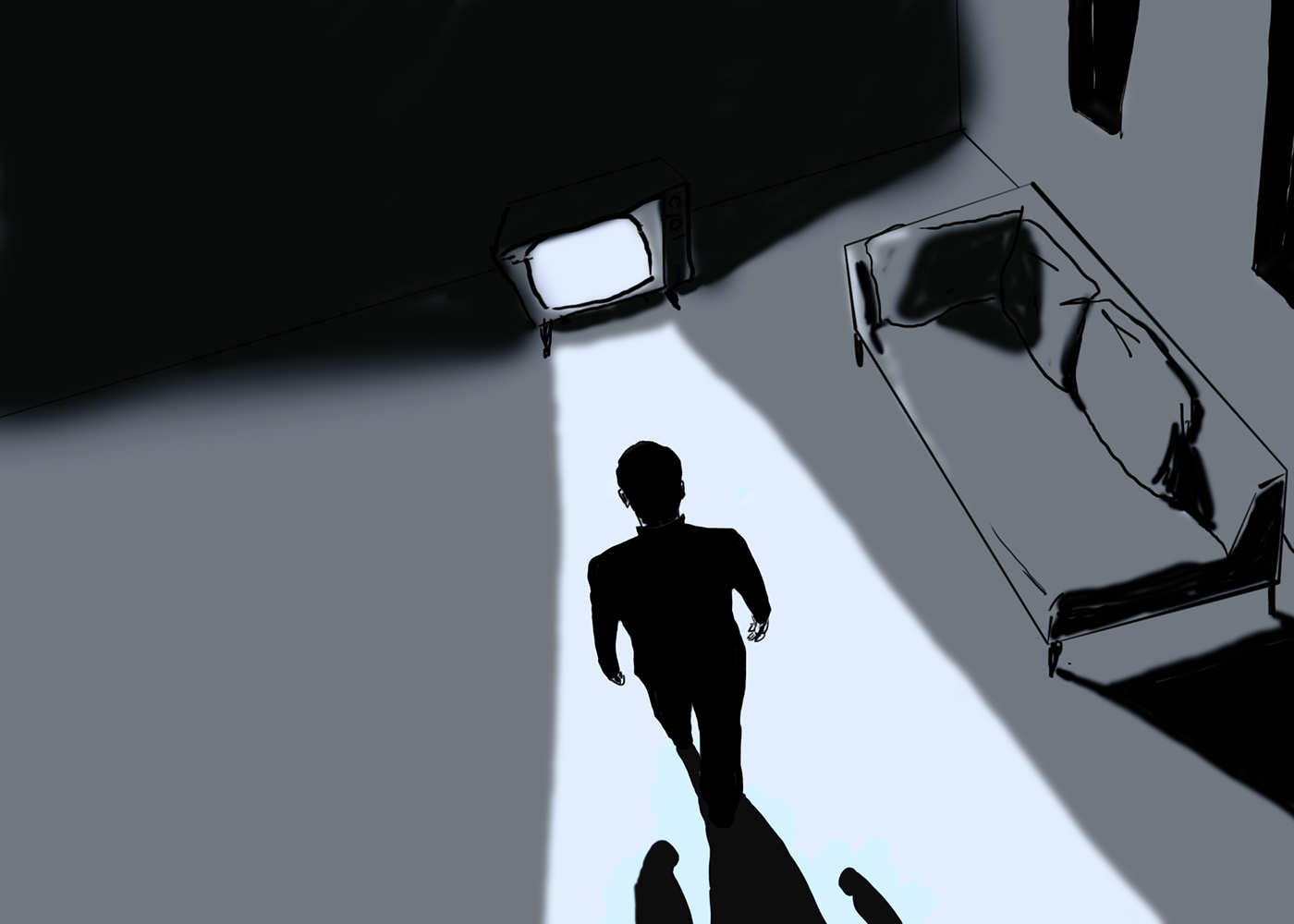
I: Lover's Leap
Supper's Ready is divided into seven sections. The first of these begins in medias res with a lover returning home after being "so far from here." This return is mirrored by the return at the end of the song, giving the entire piece a cyclical feeling of déjà vu, drawing a parallel between a physical and spiritual journey home. For convenience I'll refer to the lovers as the Point of View (POV), as they stand in for the audience and ground us throughout the song's surreal arc.
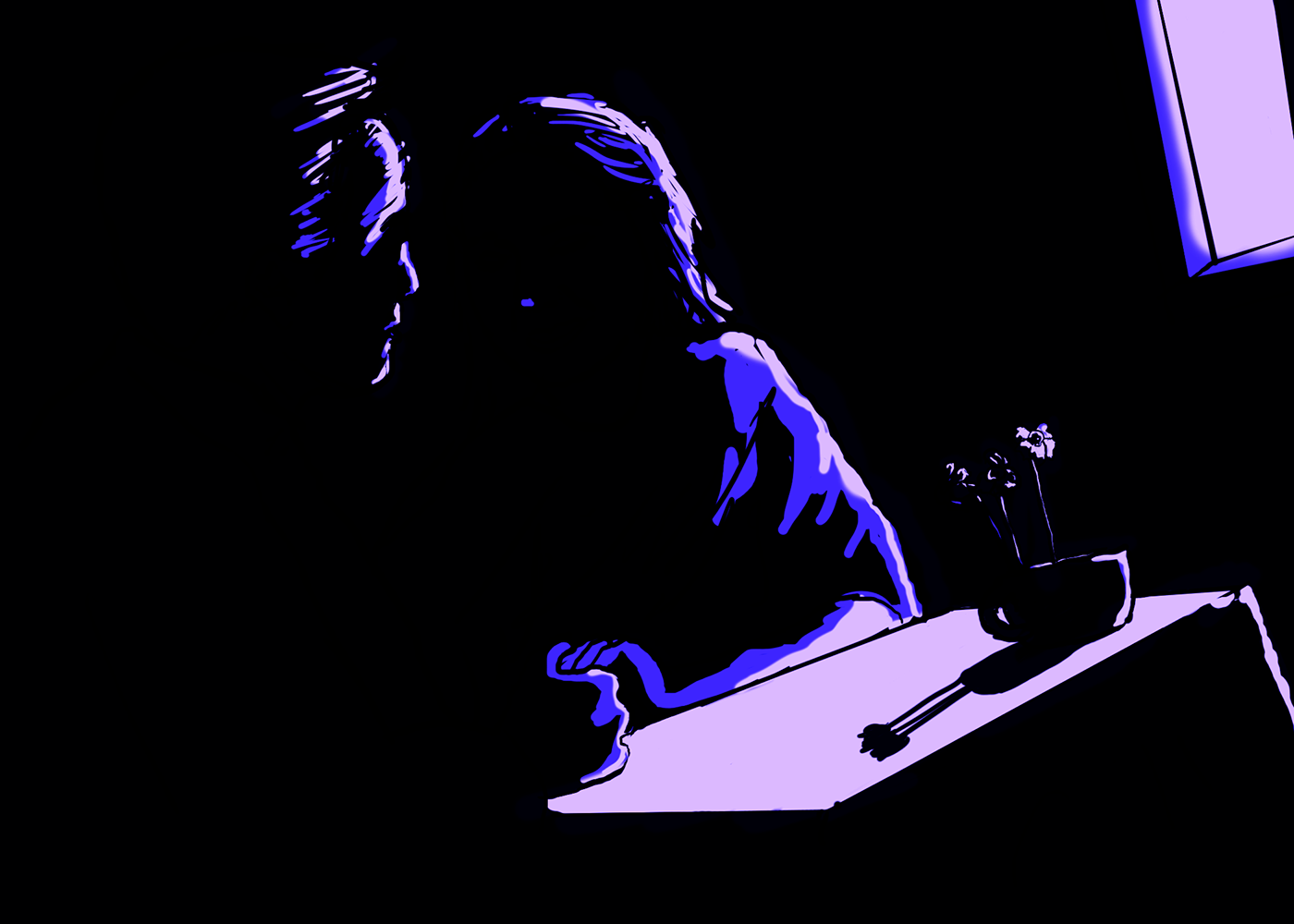
The opening lines reference a television being turned off, clearly setting the song's story in the present day. Though the song occupies modern times, a temporal fluidity grows throughout, germinating in here as odd juxtapositions that don't "feel quite right." I chose to capture this uncertainty with a color palette reminiscent of noir, drenched in blue and violet.
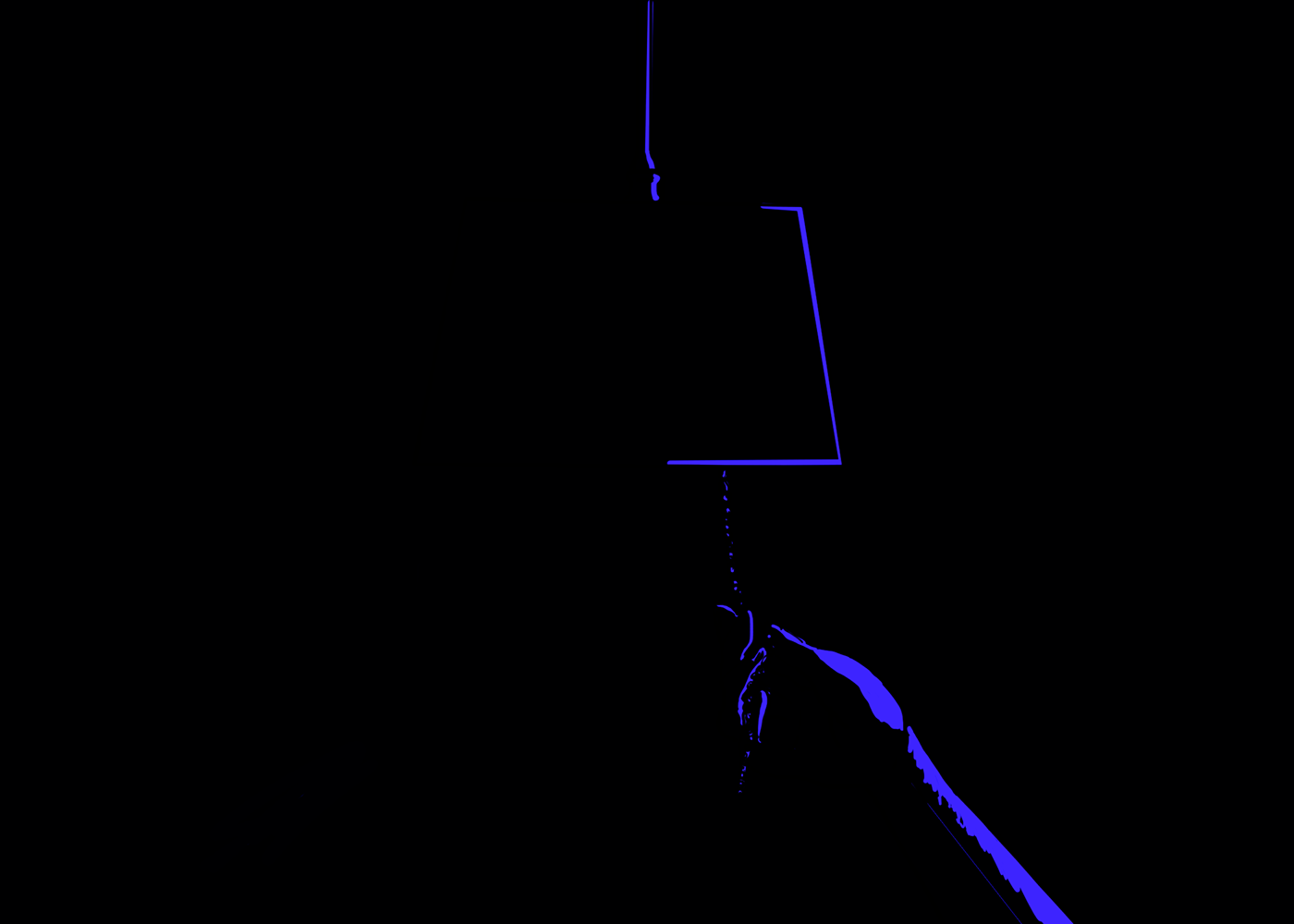
The first of these is the apparent change in his partner's appearance, which gets dismissed as an illusion of the scene's lighting.
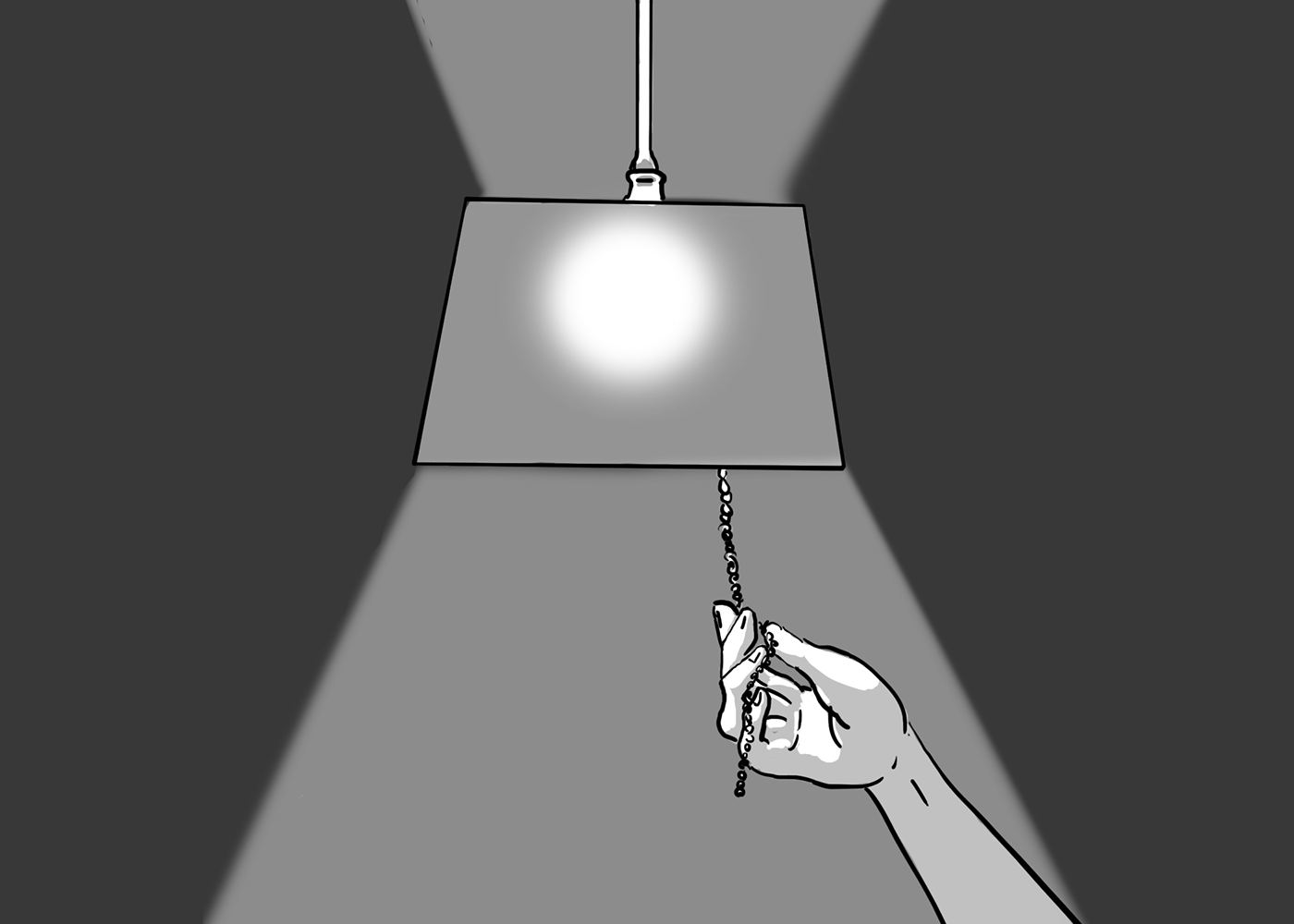
In having the POV turn on a light, the hues of blue and purple that dominate the night are washed away in the black, grays, and white of reality, or at least our perception of it. It's meant to be a calming gesture, but it just serves to further perplex the POV as the song continues and strange events continue to happen despite the light.
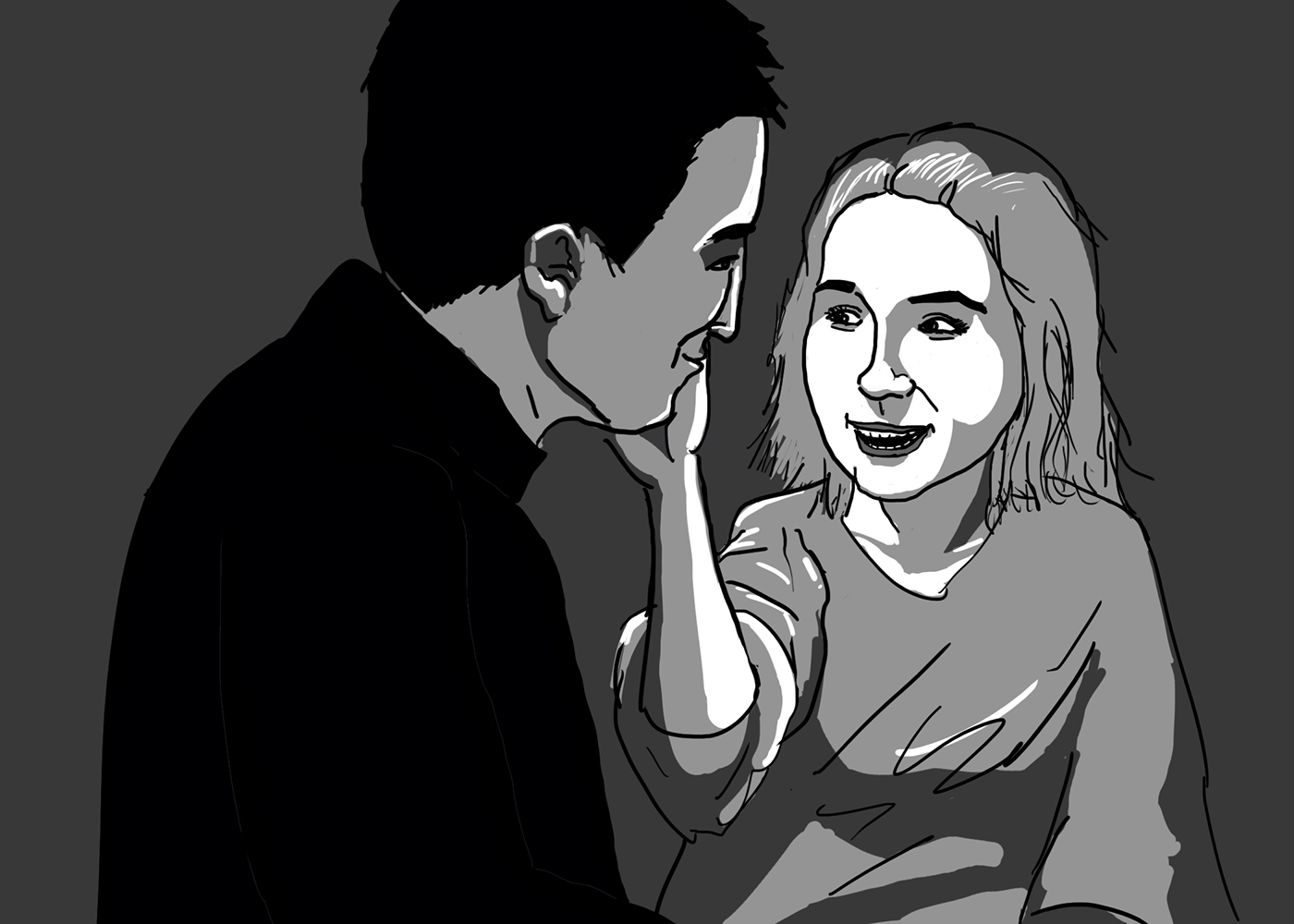
The look of the POV is influenced by a variety of sources. The male is mainly based off the appearance of Peter Gabriel, which serves a purpose as the comic progresses. He is dressed in black akin to what Gabriel would wear during live performances when he wasn't in costume, though the POV's hair is styled after how Gabriel would wear it during his solo career (as the shaved scalp with long hair thing he had during the early 70s would just be too distracting).
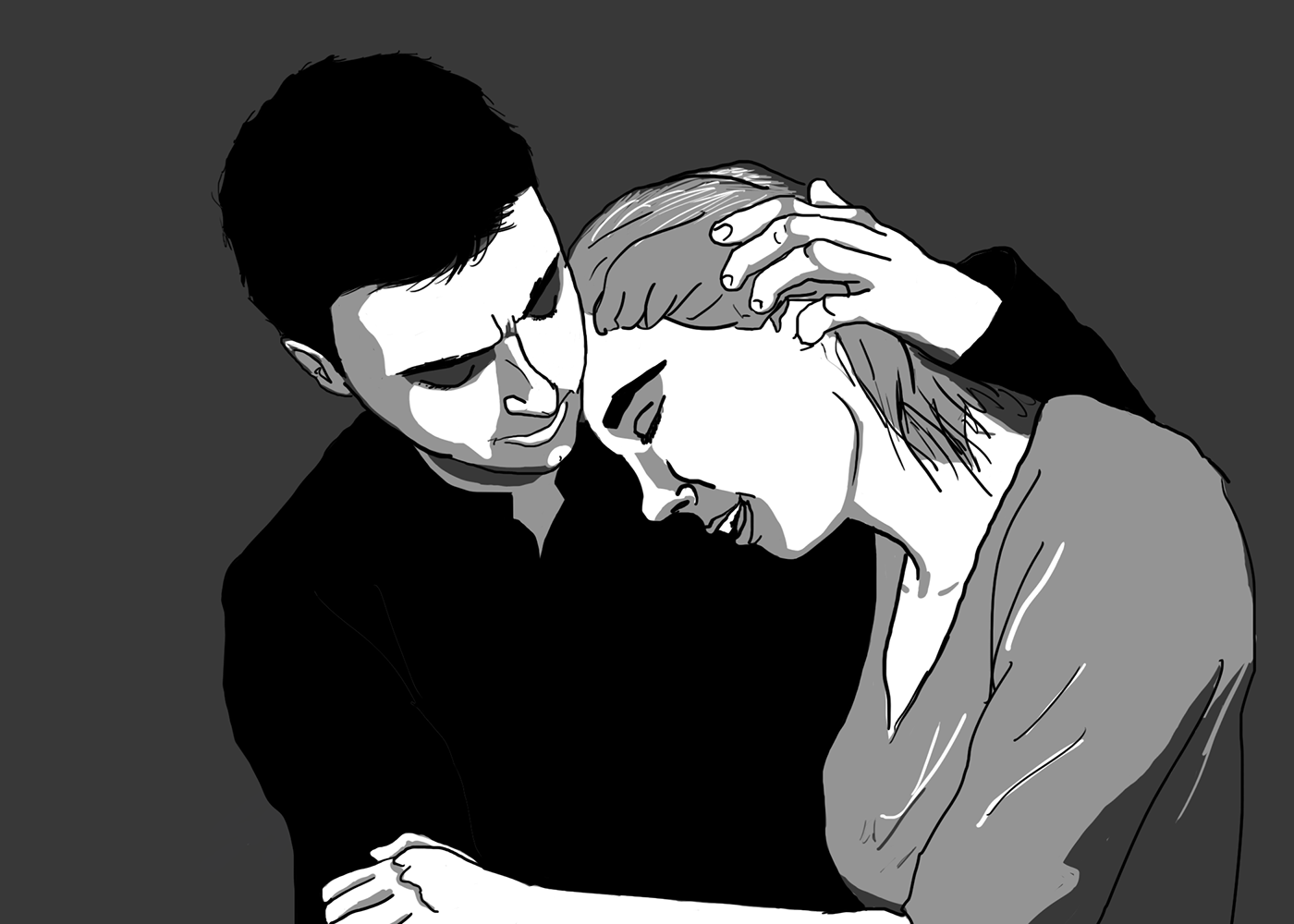
The female is not based on anyone in particular, but is more an amalgamation of various women I've known. Even though I'm trying to tell a faithful narrative through my illustrations, this project is still a very personally driven piece, and as such certain elements are drawn from my life and experiences.

Color is to play an important role in the comic, and for the rest of this section a contrast emerges between the grayscale world of the POV and the colored world outside. The seven figures on the lawn are surrounded by color, yet themselves are gray-toned. Their presence is based on an event that Gabriel claims happened to him in real life, so I chose to illustrate it as described. The POV's confusion and inability (or desire) to provide an explanation for the increasingly strange events they witness creates a surreal mood, as if on the cusp of falling asleep. Reality and imagination slip past each other, occasionally clashing.
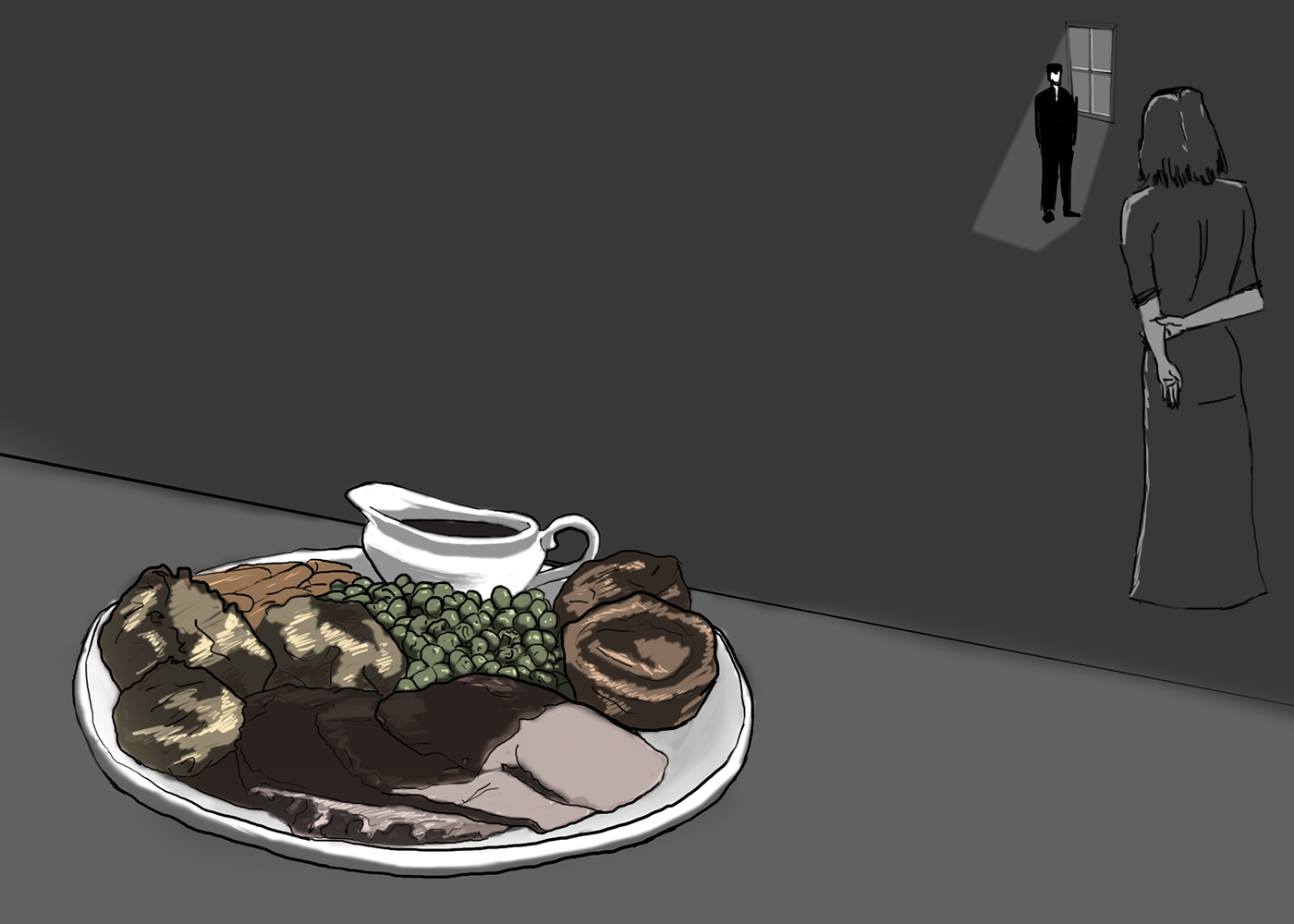
The supper, like the POV's eyes in certain shots, is rendered in color to emphasize its significance within the narrative of the song. Its sudden appearance feels appropriate (as if the male was lost in thought peering out the window), but also bears the same undertone that the end of the night (and the apparent end of his journey) won't bring about the dawn of a new day (at least just yet).
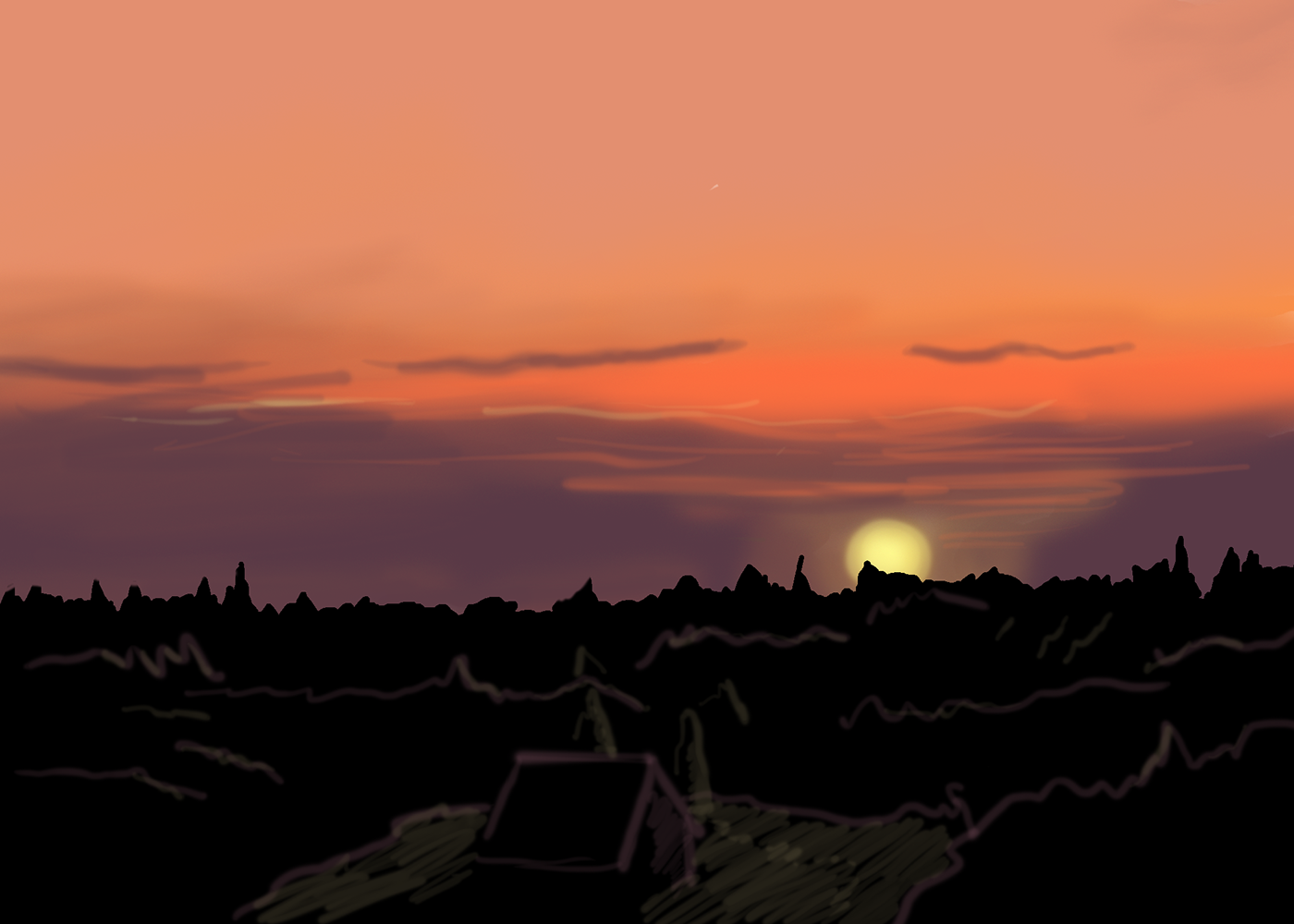
Interlude
Supper's Ready has several transitionary instrumental breaks between its clearly defined sections, which I've marked as "interludes." In the first one, I transport the viewer from the home of the POV to the town in which the second section takes place. The sunrise rendered here is meant to recall the soothing chords of "Horizons," the short instrumental song that precedes Supper's Ready on Side B of Foxtrot. But while it seems the strange episodes are over with the new day, they've only just begun...
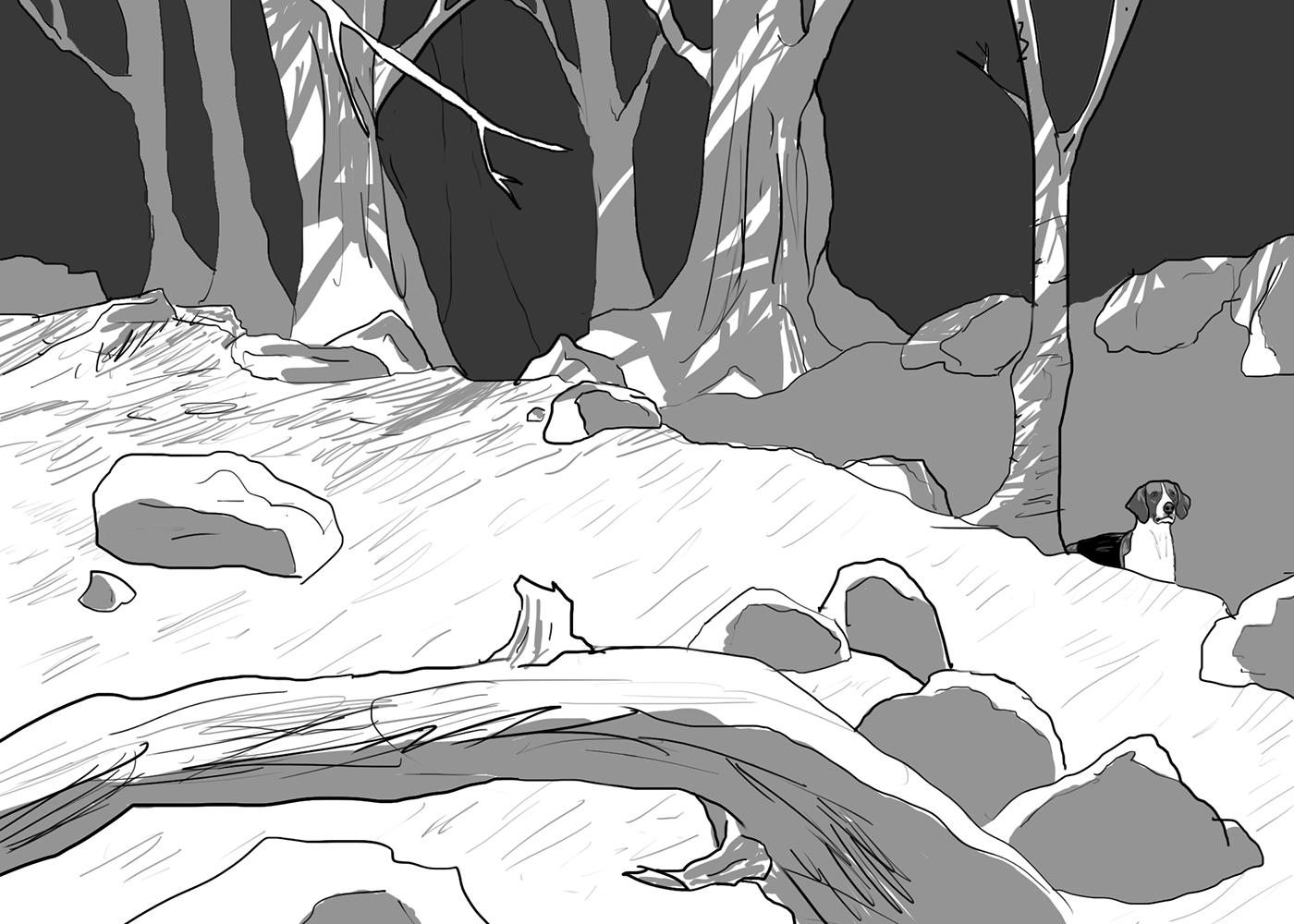
With the sunrise, the color of the outside world is lost as we enter into the forest. This change signifies the fact that the dream-like quality of the night has not dispersed, but rather it has extended to encompass the entire visible world. It plays off the old adage that people dream in black and white, and will dominate the next 3 sections.
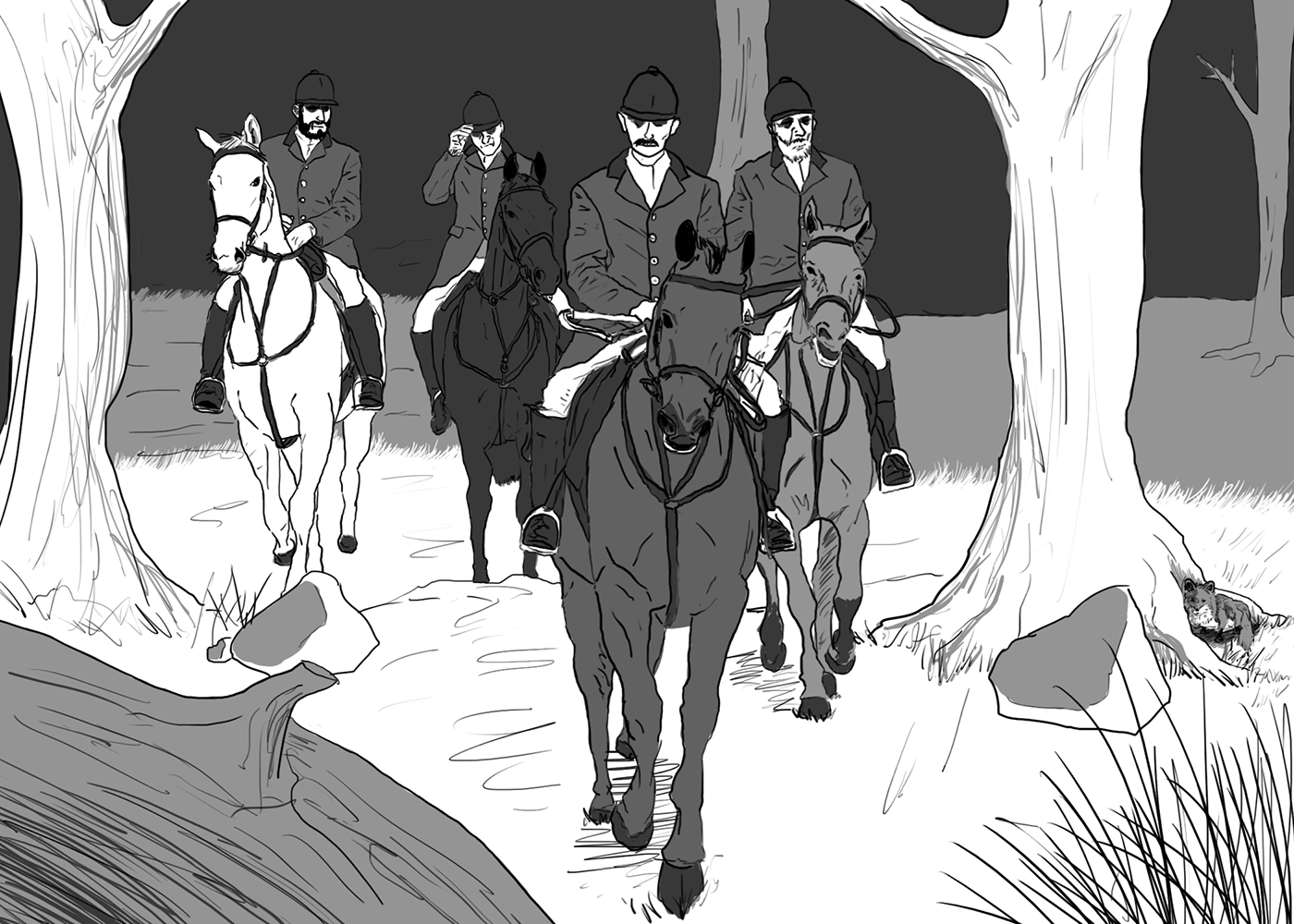
In this interlude, the narrative shifts its focus to a new cast; 11 hounds and 4 horsemen eventually revealed to be on a fox hunt. This is inspired by the cover of Foxtrot and just as other figures that will be introduced later in the comic, this hunting party will accumulate deeper symbolism as the story progresses. Forming these connections and layers of meaning is meant to recall the protean nature of dreams, in which figures and places constantly gain and shed symbolism, morphing from one identity to the next as conscious thoughts are translated into the subconscious.

The fox seeks shelter by exiting the forest - its natural habitat - and brings us to a town dominated by two personalities. This first image gives evidence of the reach of one of these figures, with a large church that bears an odd emblem above its threshold.
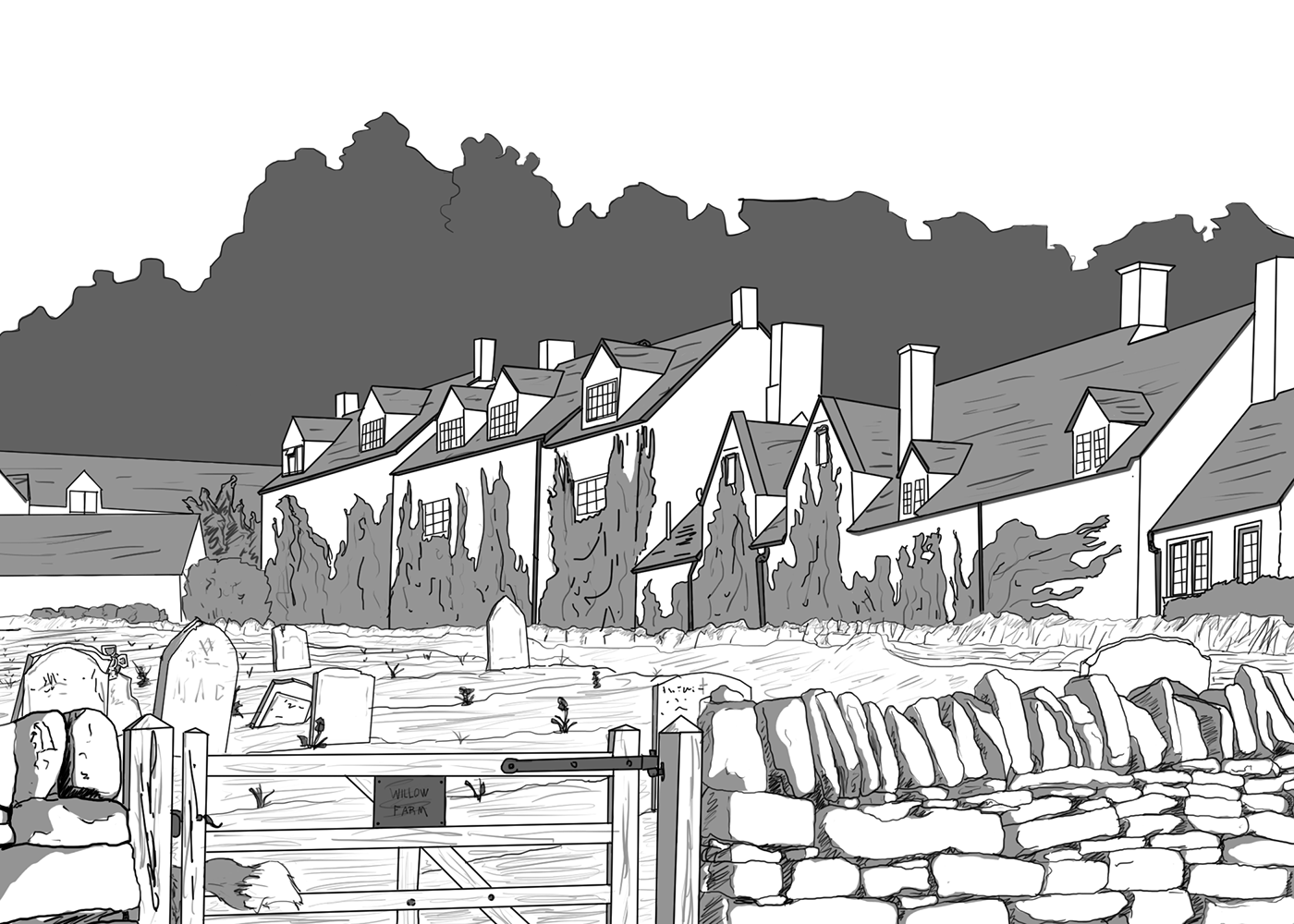
Rather than go towards the looming building, the fox instead finds companionship with the other personality; a benevolent Farmer. I draw a connection between the Farmer and Willow Farm (the song's 5th section), expressing this relationship as a field covered in both budding plants and crumbling tombstones. Life and death are natural parts of the same cycle, and the Farmer has found his place sowing its field and reaping its harvest with love and care. This cycle is precious to him, so much so that he understands that, as a mortal, he too will play his part in all of it.
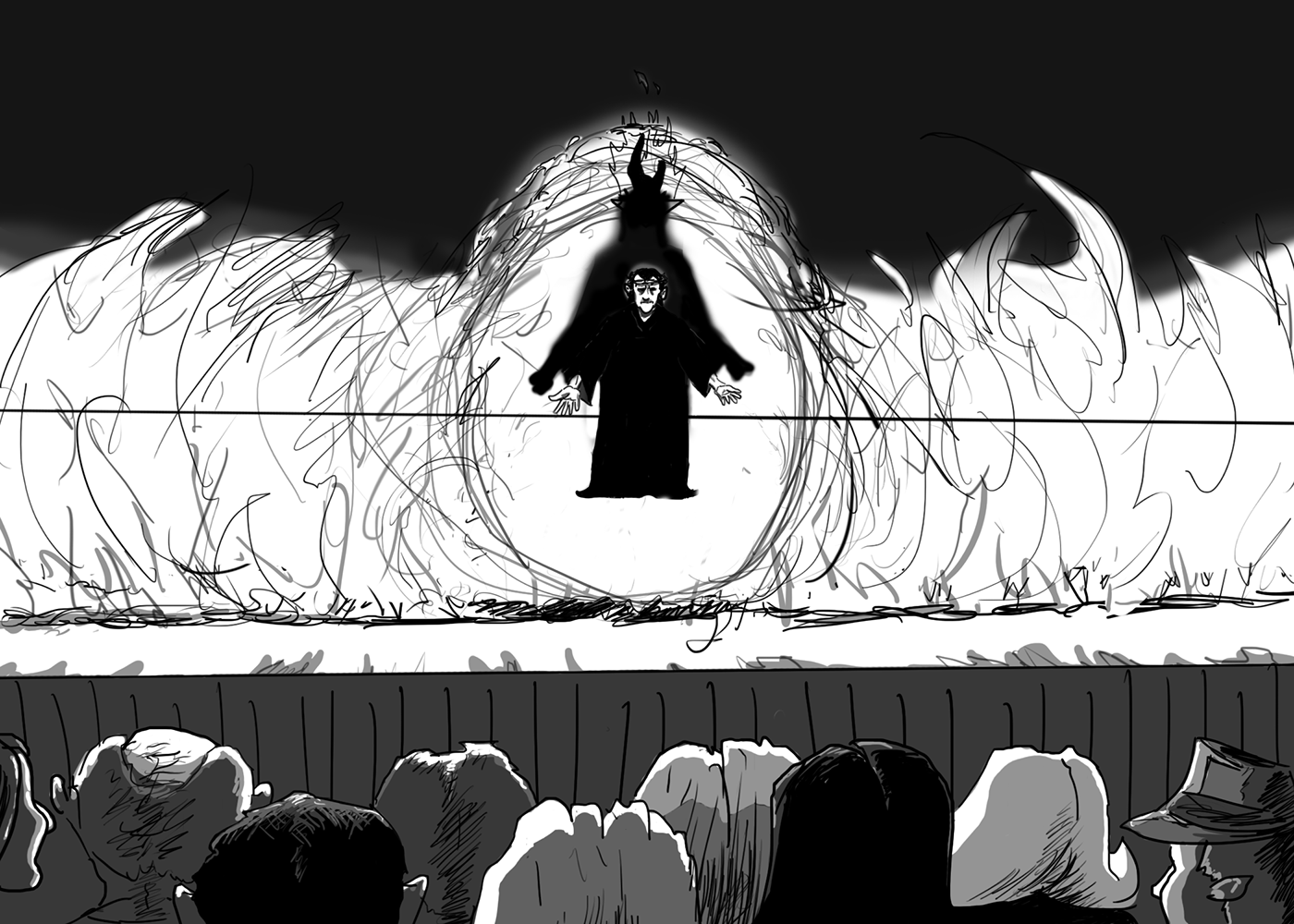
II: The Guaranteed Eternal Sanctuary Man
Meanwhile, we are brought to the part of town that is the base of the other figure; the Guaranteed Eternal Sanctuary Man (GESM), a false prophet who preaches control and violence over natural orders. The look of the GESM is based on the crown of thorns Gabriel would don during live performances of this song. He preaches a "highly disciplined scientific religion" (as stated in the band's program for live concerts), paradoxically warping the good nature of both fields in the pursuit of his own ends.

The GESM dazzles his audience with his apparent control over fire, with only the POV cognizant enough to question his abilities. Their sudden appearance in the town implies that despite daybreak, they are still within a dreamlike state, with some force urging them on, as if some great epiphany lies further down the rabbit hole. The POV try to convince the others present that they've been tricked, but the GESM has them under his spell.

More dangerous than his captivated audience though is the GESM's insistent need to proselytize. As his display of his powers ends, he begins ushering his mob of followers into a dark cave, with the POV caught amongst the crowd.
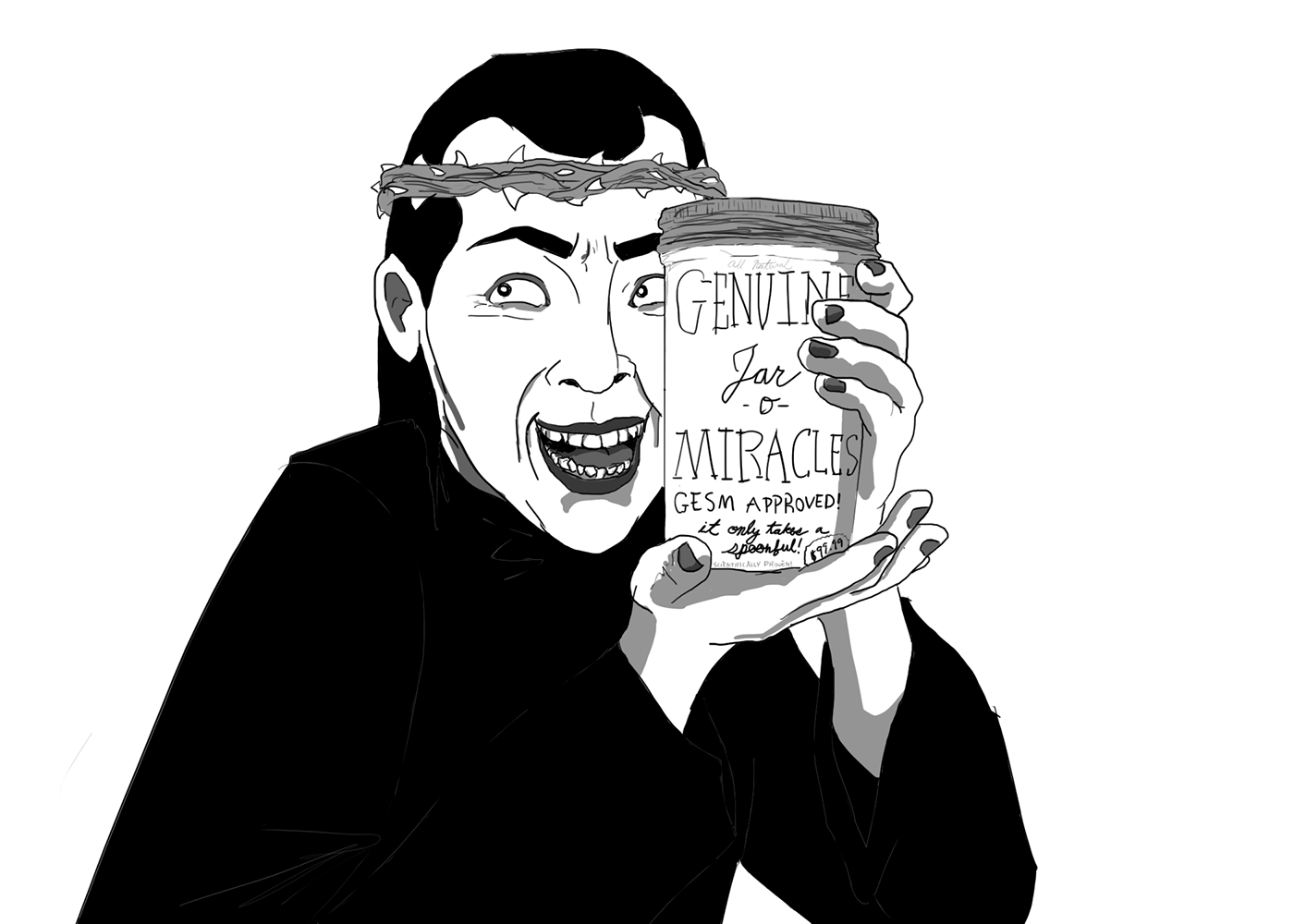
As the POV are forced into the cave, the GESM hawks his "a spoonful of miracles," which signified for me the hypocrisy of using religion to sell commercial cure-alls. The idea that one can buy their salvation negates the very notion of spirituality, and false prophets like the GESM are more than happy to offer the easy way out at a fair price.

Interlude
As the section ends, it transitions to the next with a quiet reprise of the first section's melody. School children sing a nursery rhyme about caring for a snake, which I turn into a reversal of the biblical offering of forbidden fruit. The fact that they will keep the snake "snug and warm" suggests an almost blatant understanding that the crowd knows what they are doing is wrong, and yet they lack the willpower/desire to repent.
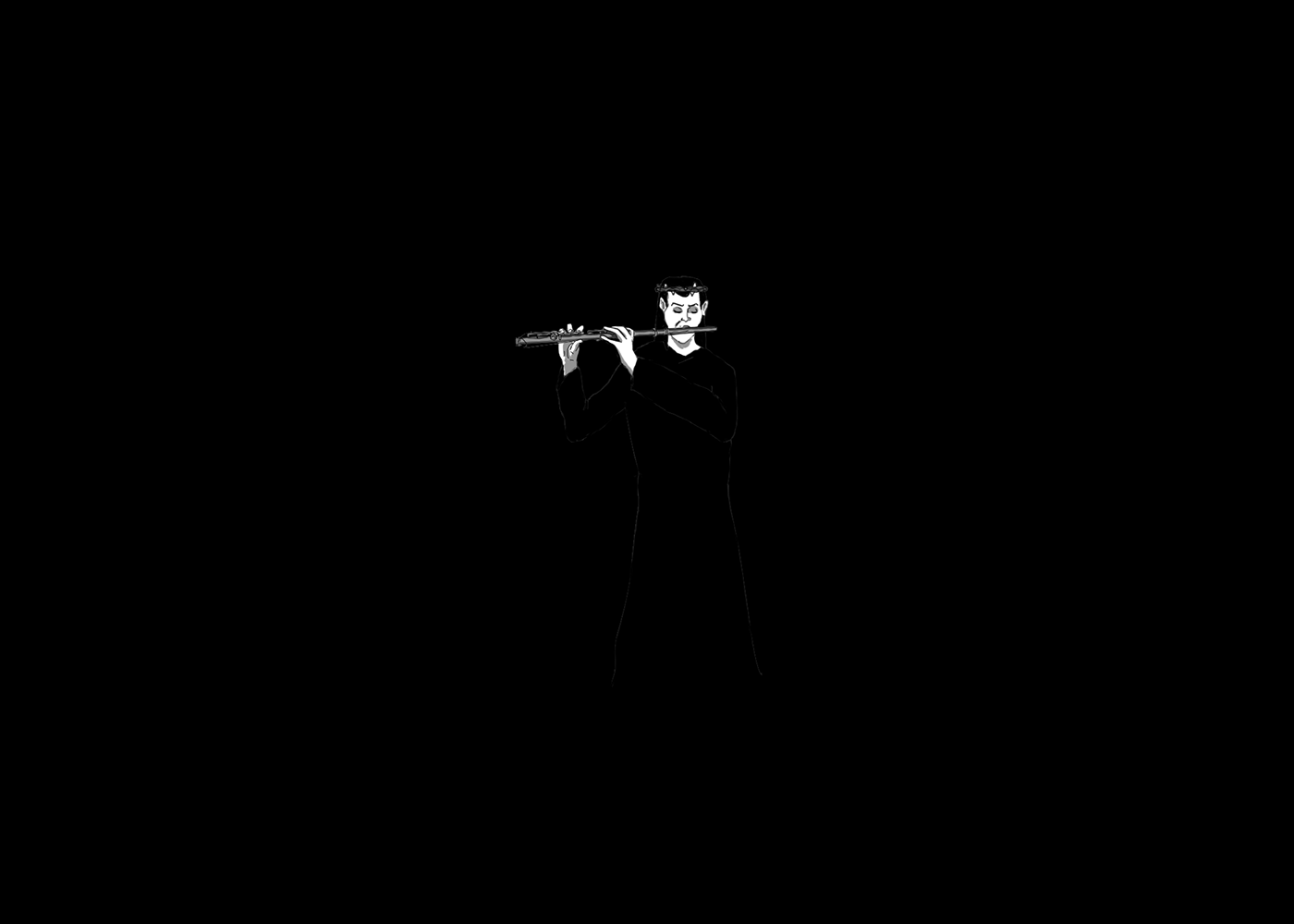
Building on this, I connect the flute used in this interlude with the later reference to the "Pied Piper," another sort of false prophet who led children away against their will with the melody of his music.

III: Ikhnaton and Itsacon and Their Band of Merry Men
The third section's title refers to an ancient Egyptian pharaoh that dismissed traditional polytheistic religion in favor of one centered around a supreme sun god. Connecting him with "It's-a-con" (the GESM) makes sense, as figures as early as Freud have theorized that there is a connection between the religion Ikhnaton failed to establish and monotheistic religions that would survive the ages (beginning with Judaism). The scientific practice of archaeology is warped in the hands of the GESM, as is the monotheistic practice of many modern religions. The GESM has taken the pharaoh's place, justifying his rule through alternative facts and the contradictory mandate of heaven (as if to cover all his bases). The crowd exits the cave and enters the battlefield to expand his empire.

The title's allusion to the legend of Robin Hood alongside its references to ancient and modern figures led me to inhabit the battle with warriors from all periods and places, building on the fluid temporality already established. The dominance of medieval knights is an indirect reference to the nostalgic "Time Table," another song off Foxtrot, but also harkens to the dark ways in which religion is skewered into holy war (e.g. the Crusades). The GESM leads his followers to battle against those who haven't fallen under his sway, and in the heat of the fight we lose sight of the POV.
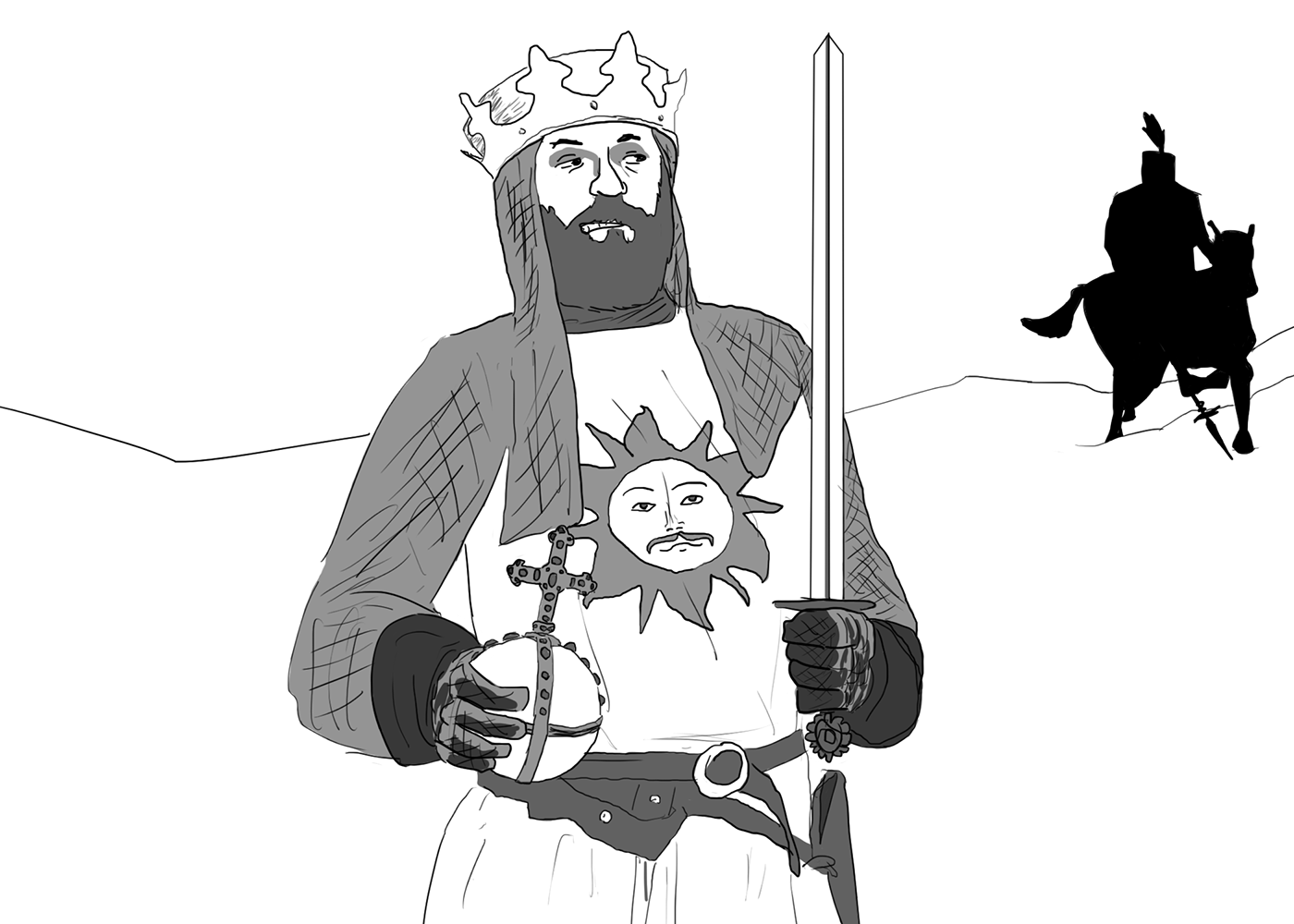
As the GESM leads his troops to wage holy war, the line that gave me the most trouble was the reference to a "Prayer Capsule." Although most likely referring to a pill of some kind (another ingestible form of the GESM's paradoxically scientific religion), I found a narratively rich meaning in the anachronistic inclusion of King Arthur from Monty Python and the Holy Grail (1975). The humor present in Gabriel's writing reminds me of Python's comedy, and I imagine he was a fan of their Flying Circus or at least was aware of it as he worked on lyrics for this song (especially Willow Farm). So with King Arthur's Holy Hand Grenade as my idea of a Prayer Capsule, I make the transition from the lyrics to the section's extended instrumental.
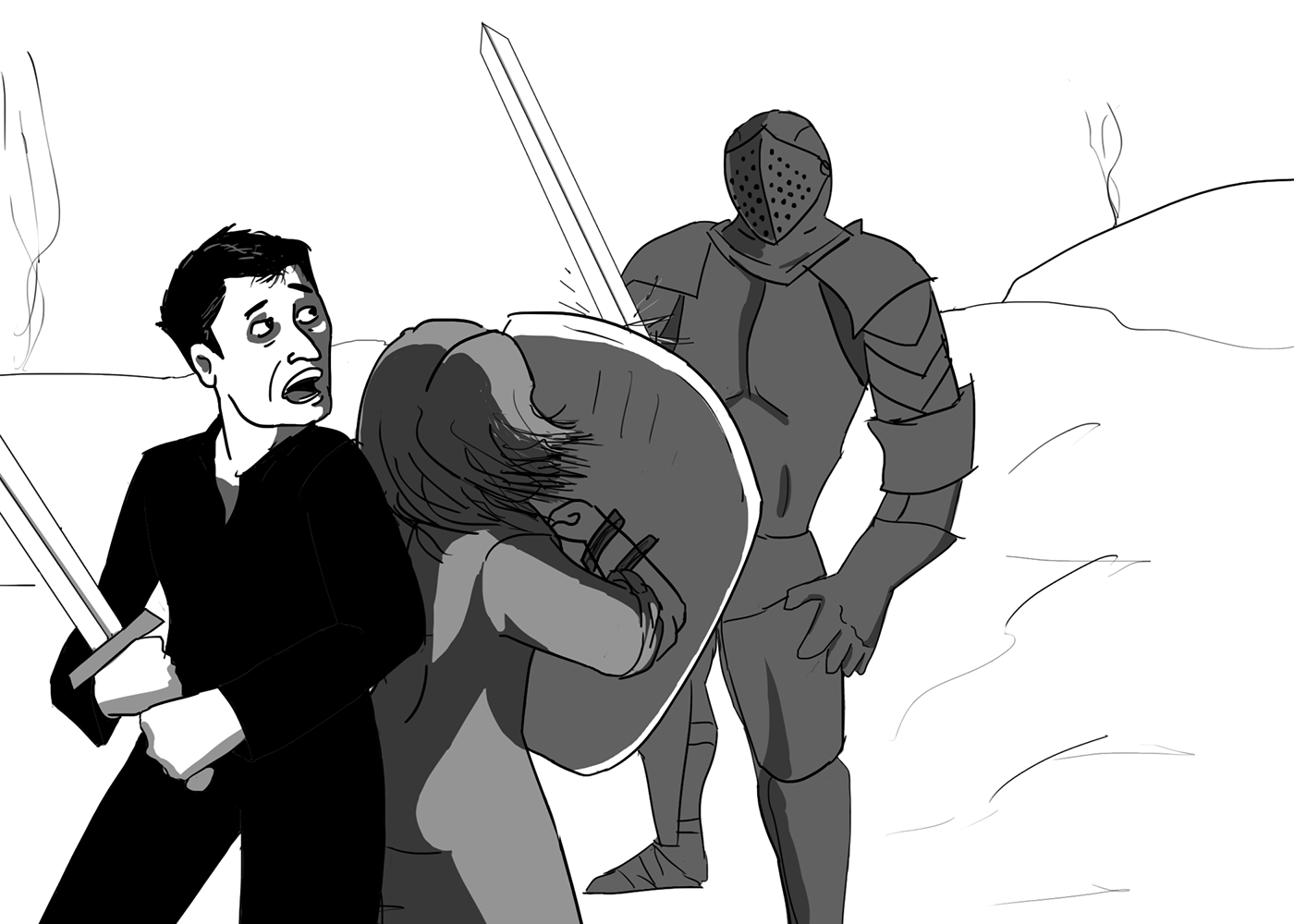
During the instrumental, we find the POV in the midst of the battle armed but noticeably out of place. As an attempt at making their journey more of a partnership than a hero/damsel scenario, I give the female a moment to show her courage when faced against an adversary. Equality is a fundamental cornerstone of a healthy relationship, and the physical endurance the POV have throughout the song is directly linked to their spiritual strength. I also thought it was funny to have her knock out a knight in full armor with just one punch, before the two of them make themselves scarce as reinforcements arrive. They survive the ordeal of the battle, and take their chance to escape the GESM's grasp.
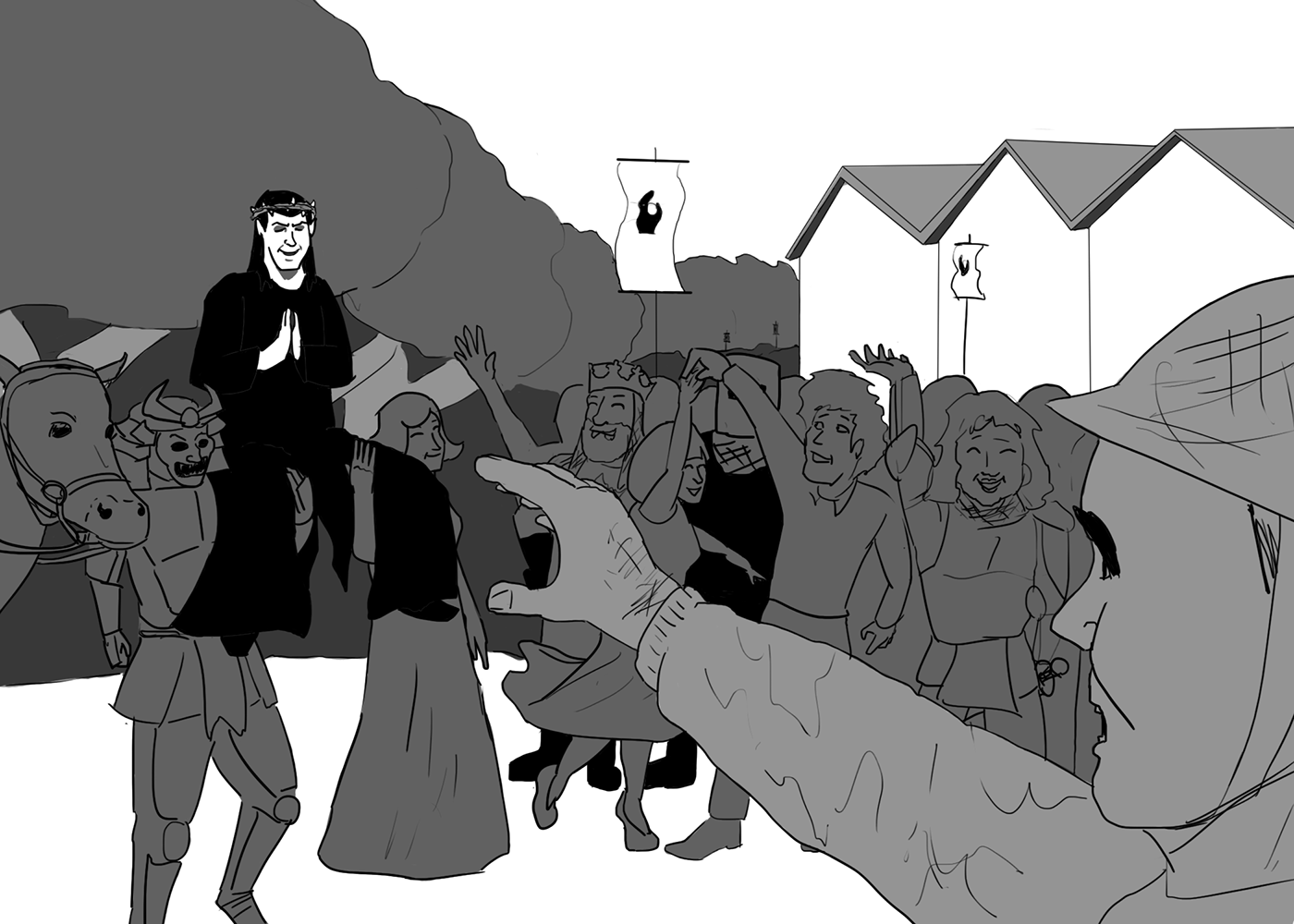
After the fight, the GESM and his army celebrate their victory, with merriment in spite of heavy casualties. It's not clear what reward has been won from the battle, and this lingering sense of futility seeps into the next section.
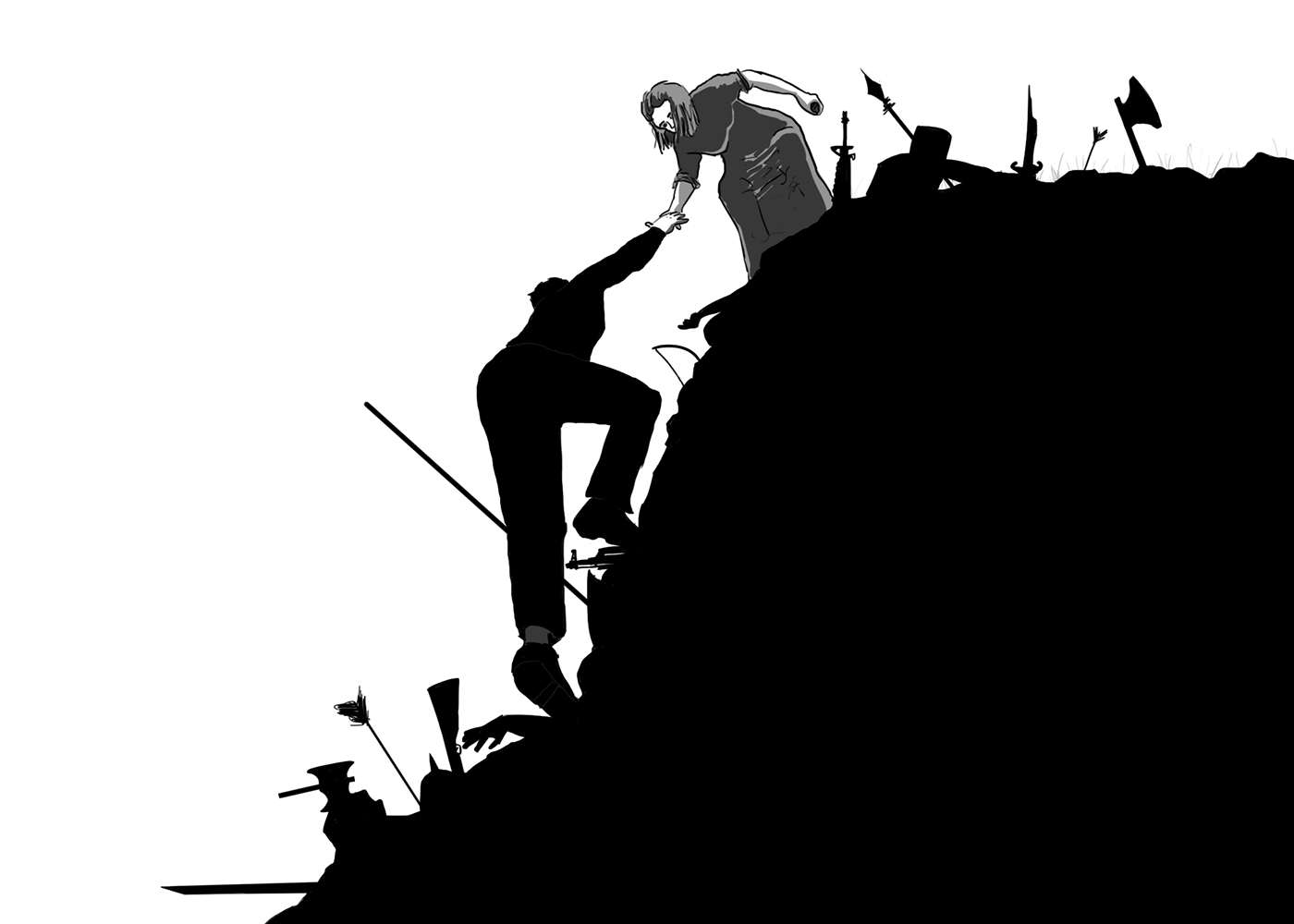
IV: How Dare I Be So Beautiful?
While the town celebrates, we transition back to the bloodied battlefield to find the POV quietly surveying the wake of the wreckage. A literal "mountain of human flesh" leads them to a "plateau of green grass, and green trees full of life." Its imagery is very straightforward, and I tried to keep faithful to this through my illustrations.

On this plateau, the POV find Narcissus staring at himself in a pool. He too is a survivor of the battle, drenched in blood and disillusioned with the world. As he stares, he rapidly ages so that "Social Security" needs to take care of him. Whereas before different periods of time clashed on the page but more or less were stable, here the disruption creates a pocket anomaly that unsettles the very fabric of reality (or at least the reality of the dream-state).
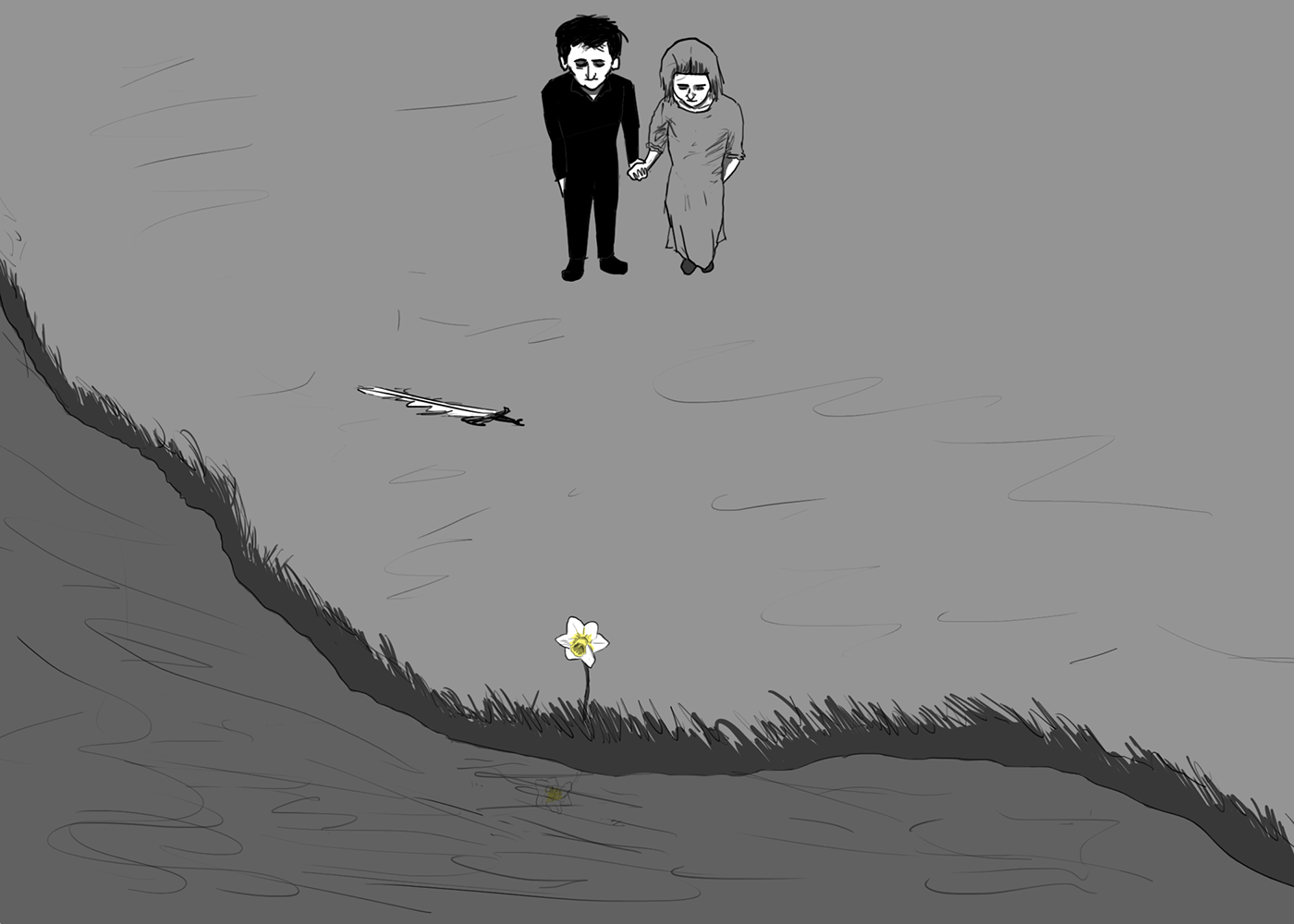
Narcissus fulfills his mythic fate, becoming a flower before the POV's eyes. Death gives way to life, just as the mountain of death holds a plateau of life on its summit. The cycle found earlier in the Farmer's field emerges here, expressing itself in a bright new show of color.
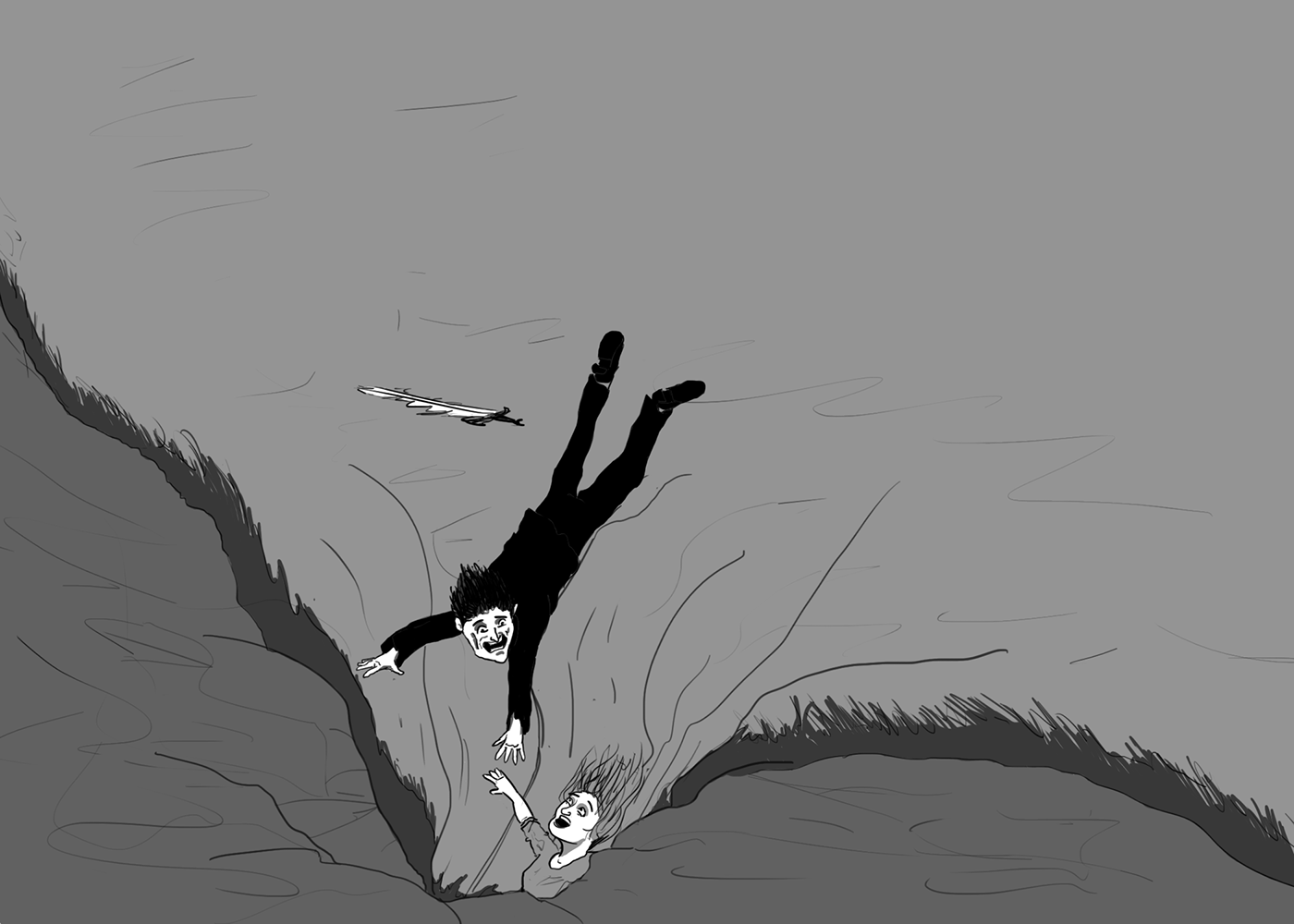
But just as this seems to be the epiphany the POV have been journeying for, the flower addresses the audience (you, the viewer) to confirm that indeed, he's been turned into "a flower?" Through a second of animation, this moment jars our perception and the anomaly finally collapses on itself like a black hole, sucking the POV down into the other side of the world.
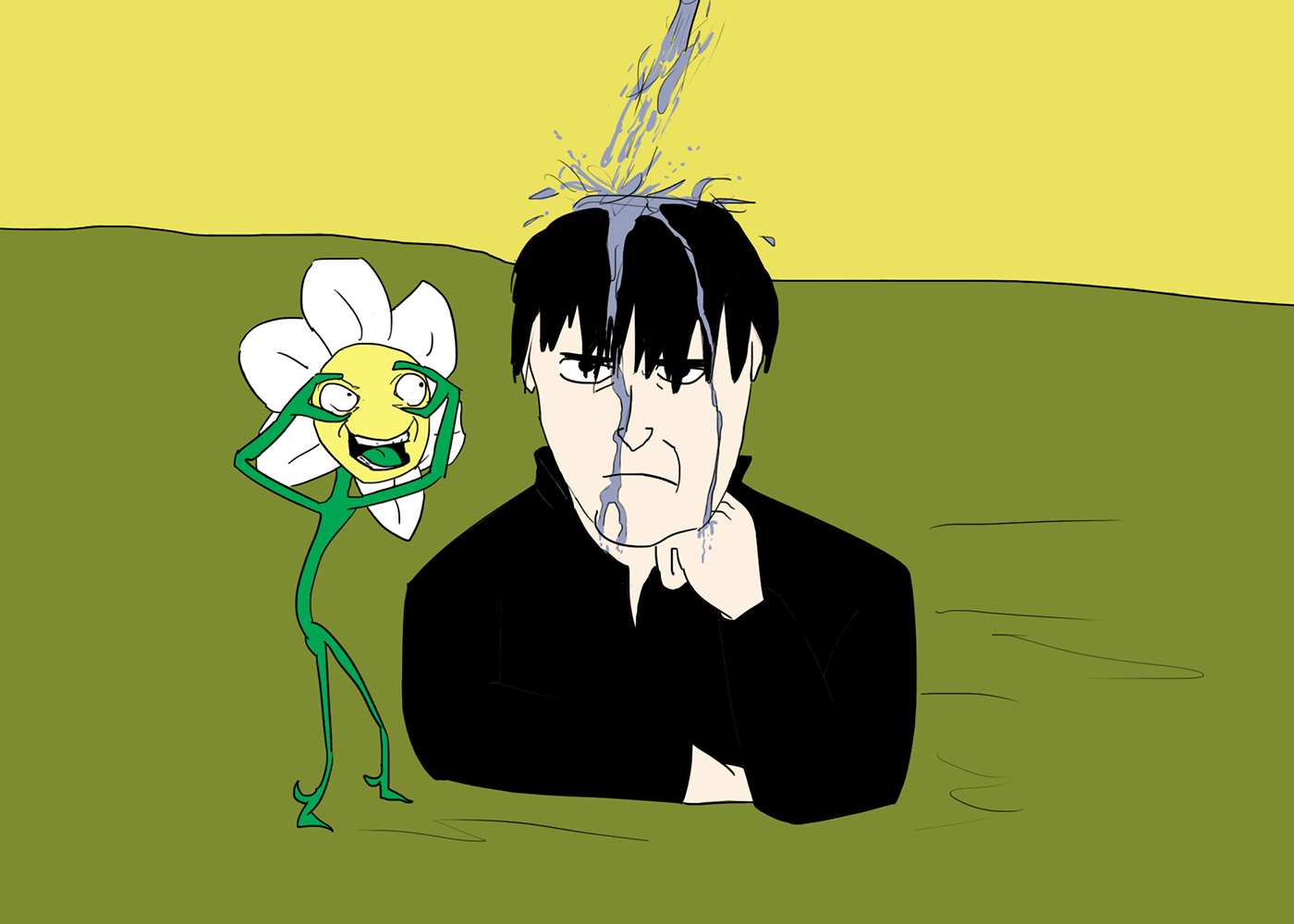
V: Willow Farm
The change in font used in the video alongside the abrupt turn to color capture the divergent mood of this section. But rather than consider it a random change of pace, understand that it is integral to the journey this song articulates. Here, all barriers are broken as dream and reality become singular, viewing the cycle of the world all at once rather than sequentially. The POV are at the mercy of the puckish Flower, who is based on the flower mask Gabriel would don during live performances. The POV remain our audience stand-in, with the male literally grounded and the female making a concerted effort to not be spirited out of the comic's frame.

The truthful admittance that "everyone lies" at Willow Farm is a good example of the word play present throughout this section. It recalls both Carrollian and Pythonesque humor, and as with any joke it shouldn't be taken too seriously. Thus, the symbolism I crafted earlier with the snake is recast as a lark, a self-referential stab at my own need to overanalyze.
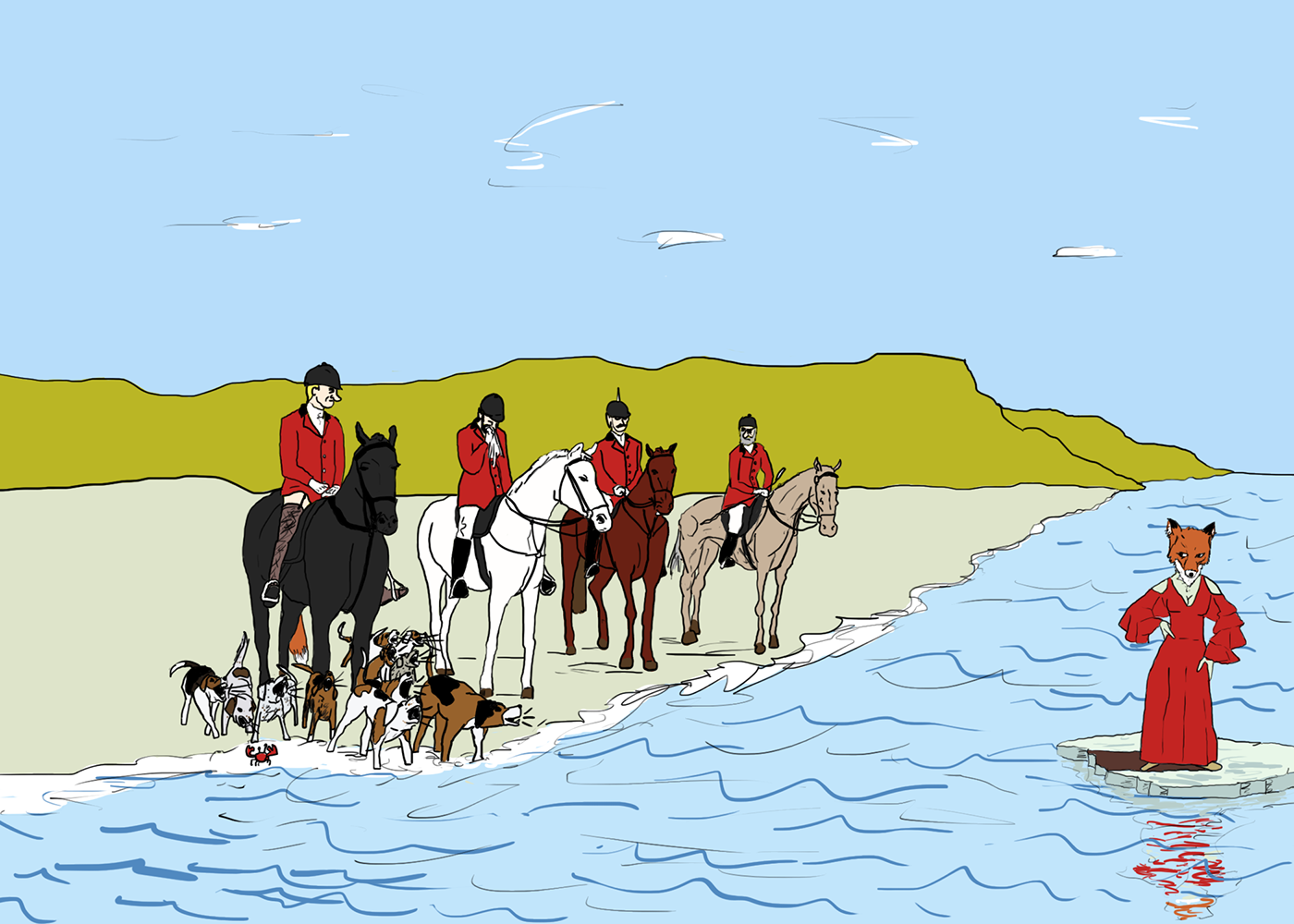
This metafictional treatment is inherent to Willow Farm, which knowingly breaks the fourth wall by referring first to the album this song is part of (Foxtrot) as well as the band's earlier piece "The Musical Box," off Nursery Cryme (1971). Fox is purposely spelled "focks" as even the words must transform to suit the fluctuating reality of the world (to make a rhyme with "rocks"). As such, I reimagine the album's cover with the hunting party and fox parodying the imagery that influenced their own conception, like a snake eating its own tail.
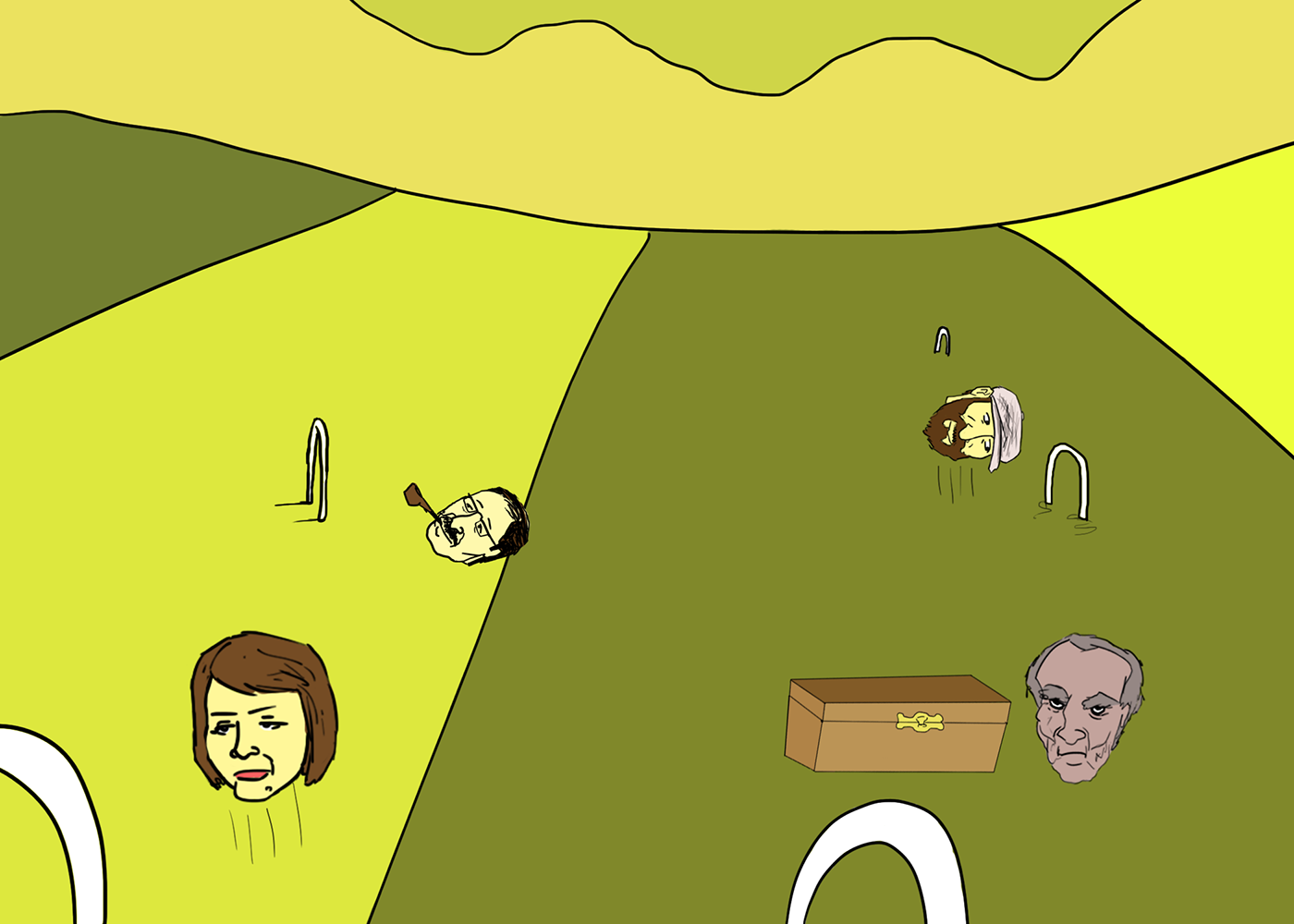
As the lyrics also reference "The Musical Box," Nursery Cryme's album art helps establish the imagery and color palette for a large part of this section. Beside "mum and dad" are "good and bad;" the bad a nod to the live performance of the song, where Gabriel would don a dirty old man mask. The good the head of the Farmer, a caretaker and active participant of Willow Farm. While he tends to its garden and reaps its harvest, he does not attempt to live outside its cycle like the GESM, accepting it as natural and unavoidable. It is the illogical, surreal loop of mortality.
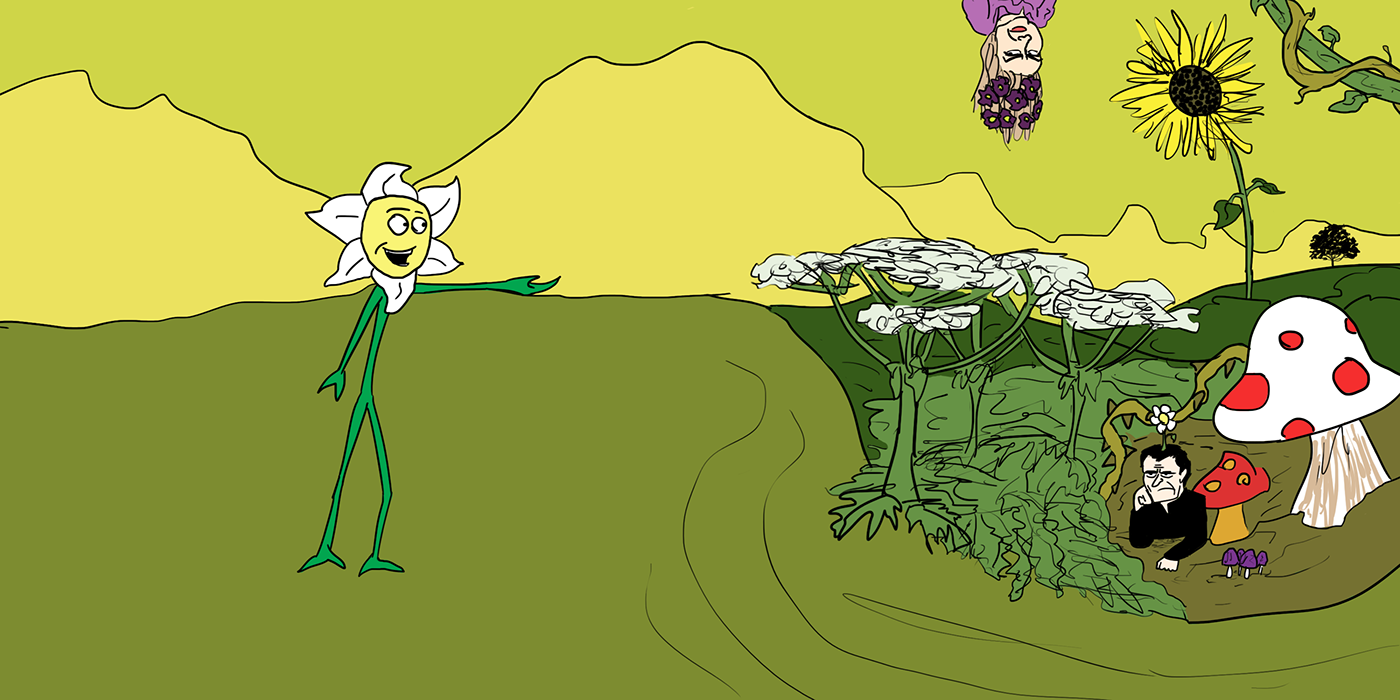
The section goes through its motions, subjecting the POV to a barrage of random changes. The consistency of this change almost renders it still, as things both are and are not simultaneously. Everyone truthfully lies, and the fact that the POV never seem to enjoy their time here can be considered evidence for why living with a notion of time (and living as a mortal) is not something to take for granted.

As the section changes its melody and tempo, my illustrations amp up their omniscient attitude. As we - the audience - are aware (or can at least look up), the career trajectory of the band members, I play with this hindsight by connecting here the male POV with his physical model: Peter Gabriel. By basing his appearance off Gabriel and filling the world of Supper's Ready with the visual manifestations of his personality (as he'd express through stage and video with his array of costumes), I draw a nonlinear path through his career to gain an understanding of his evolution as an artist.
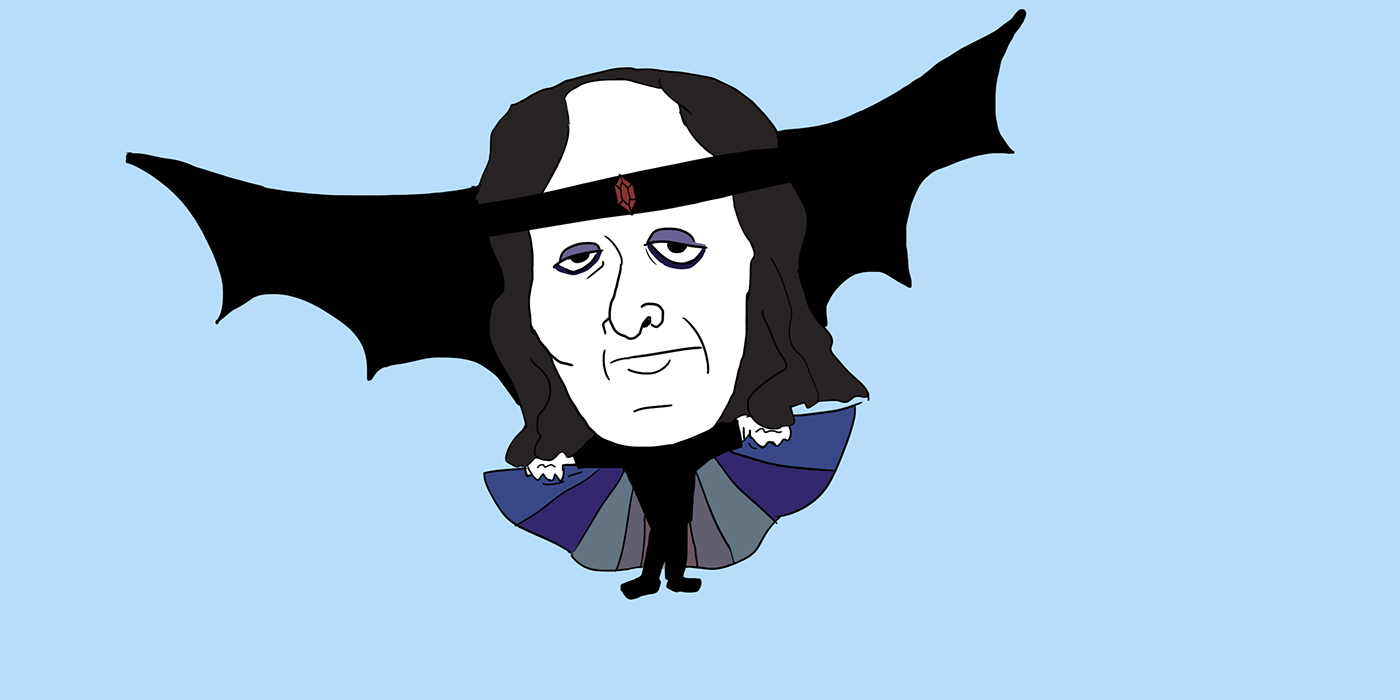
So alongside costumes from his Genesis years (including the Watcher from "Watcher of the Skies," off Foxtrot) are also nods to his solo work, as one must consider the spectrum of his artistic journey to truly appreciate what makes him a unique creator. This is a lesson one should apply to any artist one wishes to gain an understanding of.

Synchronized with "Dad to dam to dumb to mum," an important transitional moment occurs in which the two POV are shown as yin and yang, equal parts of the same wheel. Along with their unity, the background rests as a hue midway between the blue and pink of each segment.
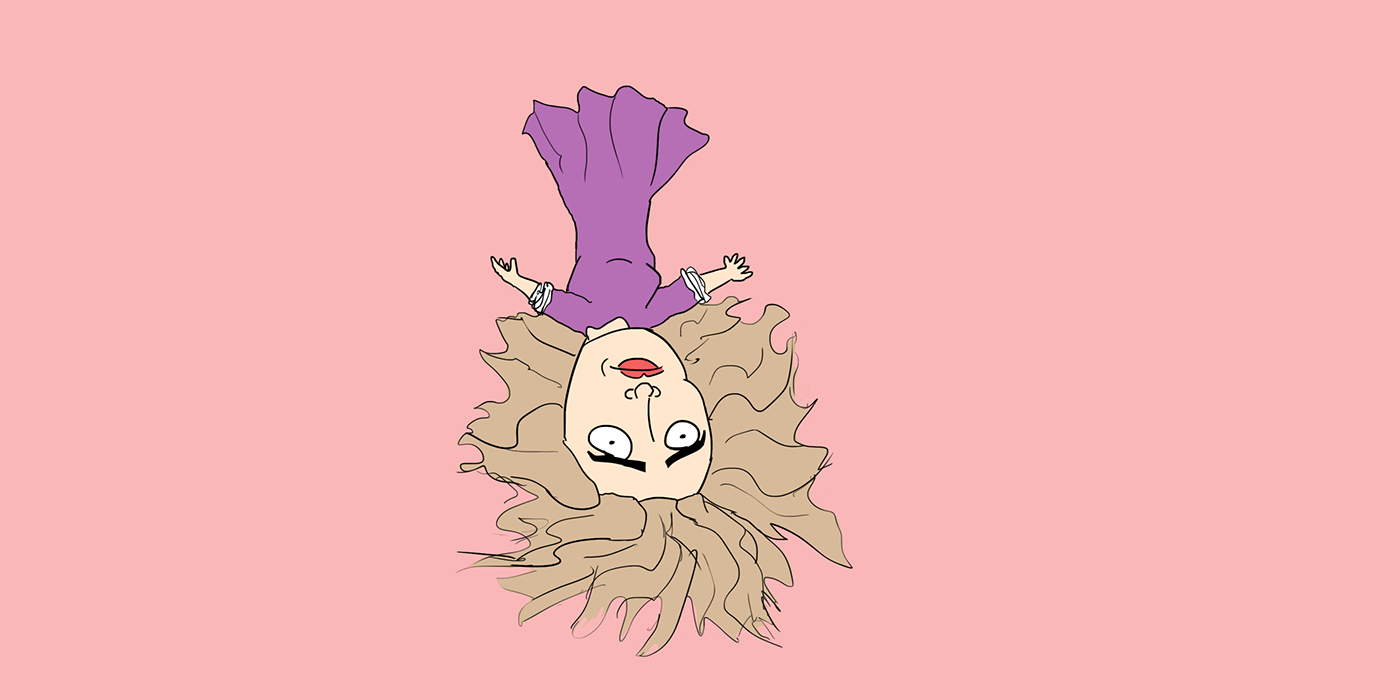
With the female POV, I present a parallel study of the growth of the band with and without Gabriel's presence. This is because I feel it is wrong to champion one period or the other when it comes to a progressive rock band like Genesis, for how else are they meant to be progressive than by evolving their sound and direction? And while I personally enjoy the Gabriel-era albums more, there is a lot of great music in the Collins-era that should not be overlooked out of some misplaced loyalty.

Questions of loyalty led me to explore through veiled song references how the band's music has dealt with the relationship between men and women throughout their years, finding that often it is through narratives that are less than healthy...
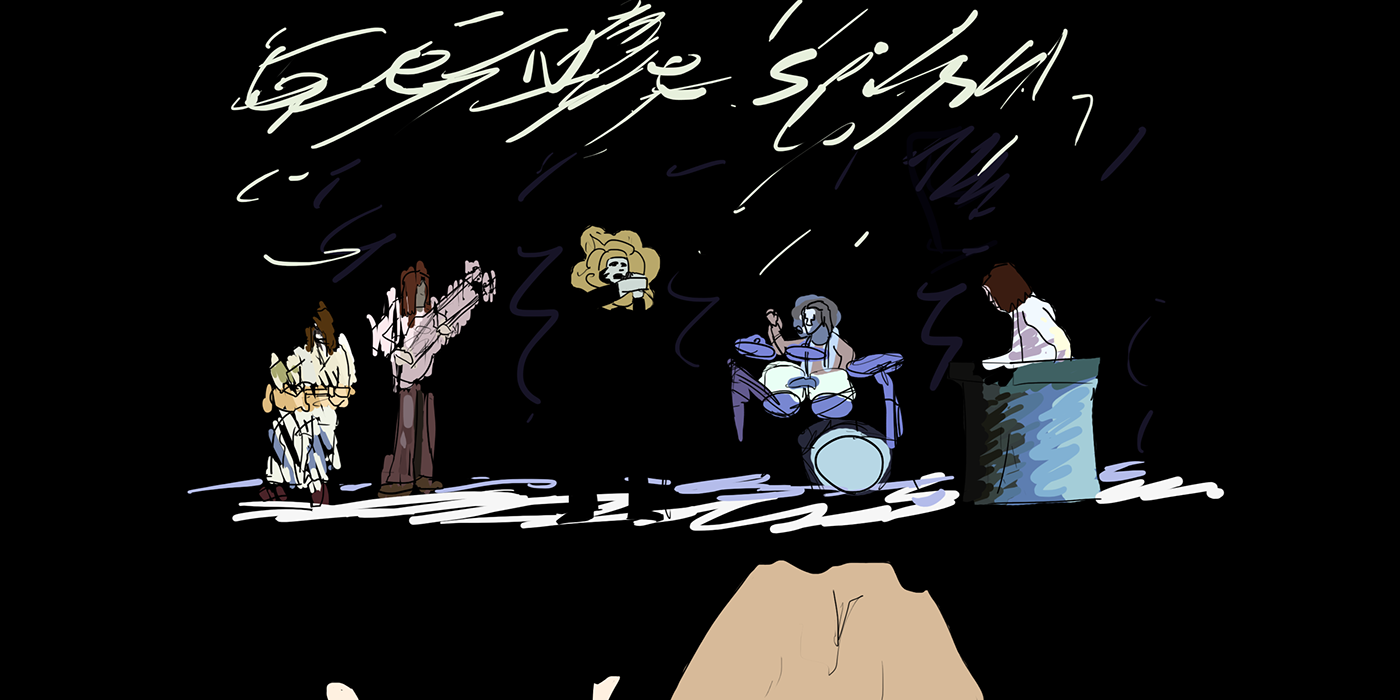
The comic reaches its peak metafictional state with an image of the POV witnessing Genesis performing the song in which they are in fact an illustration of (during the Willow Farm section no less). The headache this looping creates, like an infinity mirror, reflects the darker tone the section takes on, with the Flower sounding oddly hypnotic and controlling, especially at the line "you've been here all the time." His attitude begins to creep in a way similar to the GESM, revealing that even with the notion of one being good and the other not, together they are sides of the same coin, and like yin and yang cannot exist without their opposite.

As the Flower recounts that the POV are "under the soil," my illustration turn for guidance to the introductory speech Gabriel would typically make before a performance of Supper's Ready. He tells a story involving worms and a dirty old man. You can research the speech yourself (as I won't do it justice here), but near the end, in the presence of the writhing worms, the old man whistles a tune. To us, it may sound like a simple song, but as Gabriel puts it, "to the birds it meant supper is ready." The predator/prey relationship is a natural part of the mortal cycle, yet when our POV (and audience surrogate) is cast as the latter, we are inclined to root for their survival. Narrowly they escape underground, and the Flower's game is over.
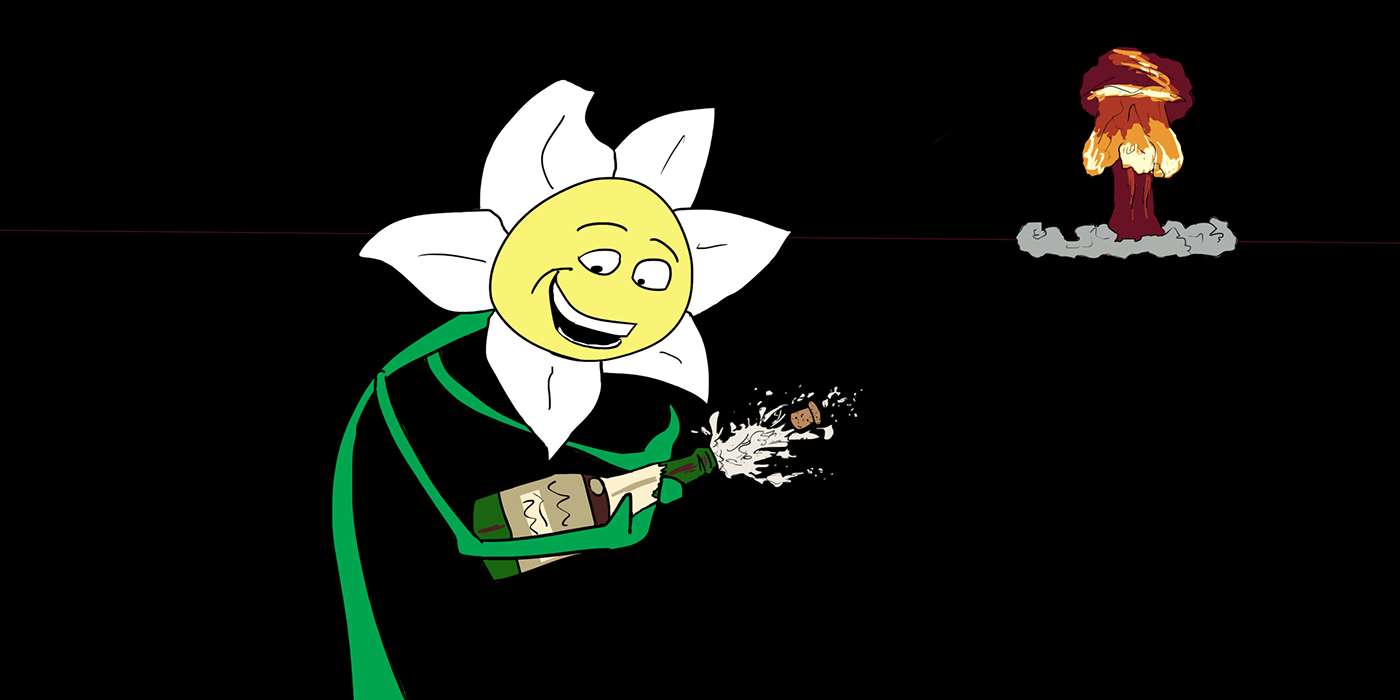
While the POV make their escape, the carefree Flower finds the tables turned. The portending doom at the end of Willow Farm is important in linking this joyful section with the dramatic penultimate one. Like a tree falling in a forest, the absence of the POV cause time to march forward at an accelerated rate. Willow Farm may deal with all the world at once, but the next section deals with its inevitable end and the break between the mortal cycle and the immortal full stop.
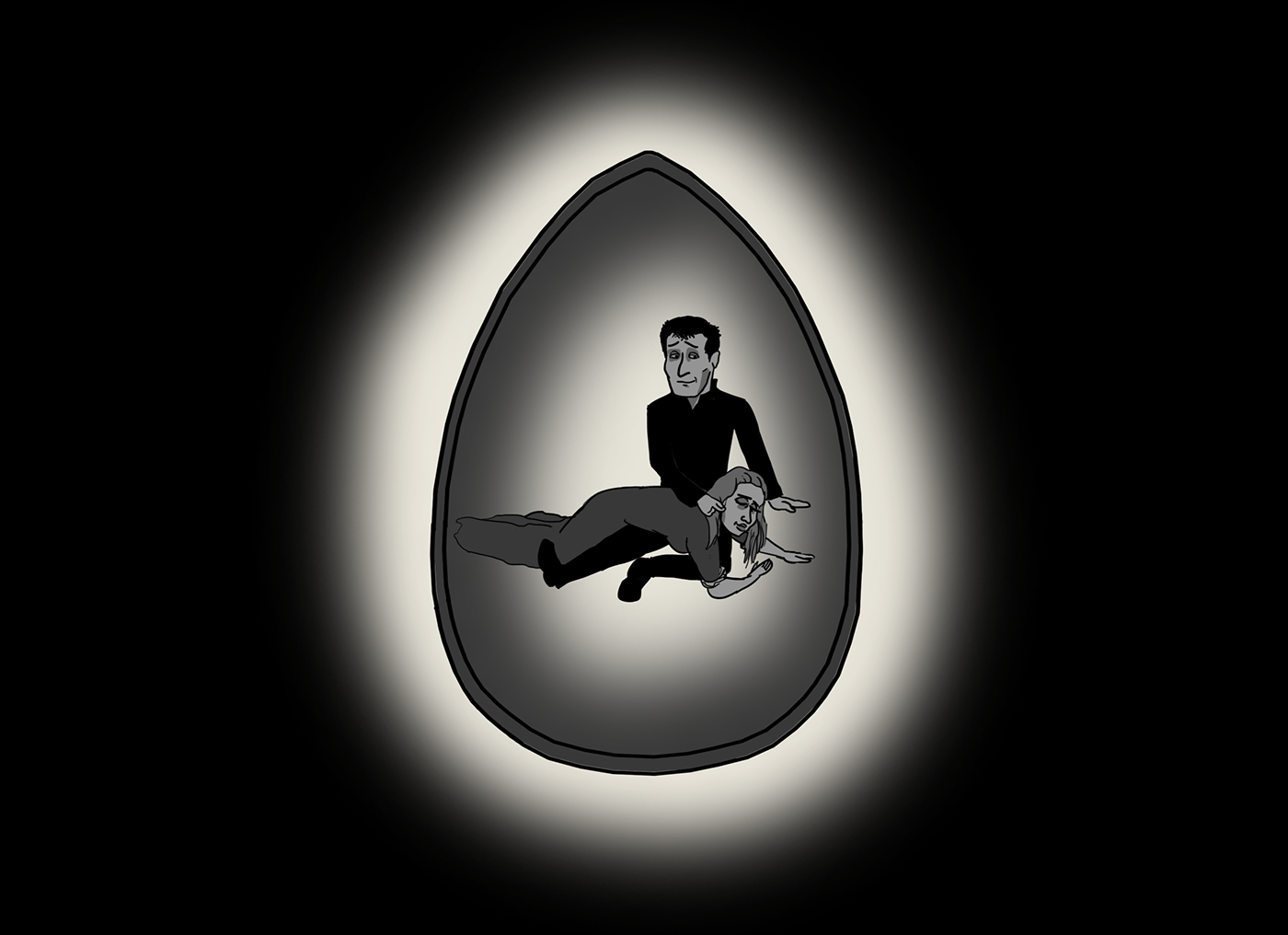
Interlude
After the hectic Willow Farm, the POV find relief within a somber instrumental piece. Returning to their human forms underground, they become encased in a protective seed. Although their spirits are low and drained, the male POV finds solace in a tender moment, gently brushing a hair off his lover's face. Their journey is difficult, but taking it together helps them face any obstacle. Soon after, the seed grows roots, and the POV are transported back to the surface world.
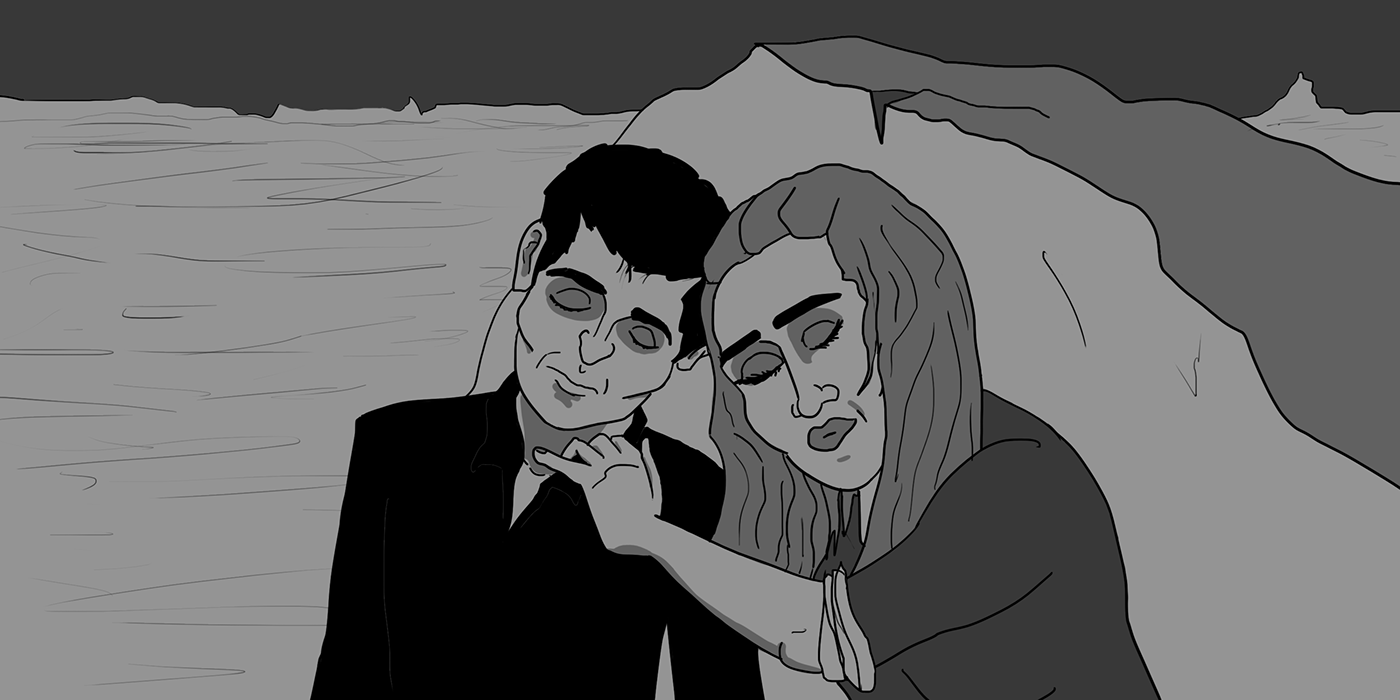
They are returned to a grayscale world, and like Odysseus perhaps they dream their journey has finally ended. But while the chaos of Willow Farm is long gone, when they awake they are faced with a new terror; the realization of just how much time has passed since they've been away...

They awake to find the 11 foxhounds around them, all mutated into savage beasts. And as the gray tones give way to shades of blood red, the lead hound clenches within its demonic jaws the limp body of the dead fox. It is the dawn of the end of the world.

VI: Apocalypse in 9/8 (Co-Starring the Delicious Talents of Gabble Ratchet)
This section is perhaps the most intense of the song, layering cliché apocalyptic lyrics over music in an unsettlingly unusual time signature. The imagery of this section, like its lyrics, takes cues from the Book of Revelations. And just as the lyrics play with the ordering of the events that lead to the end of the world, so too does my artistic license distinguish between what's written and what's shown. "The guards of Magog" are erroneously the 4 horsemen recast as the Four Horsemen of the Apocalypse (left to right; Death, Famine, War and Conquest). Conquest, riding the white horse, is also sometimes associated with Pestilence, so as a happy medium I imagined him as Chemical Warfare, demanding the conquest of other lands at all costs (even the land's own fertility). As they enter the scene, the POV naturally flee in fright.
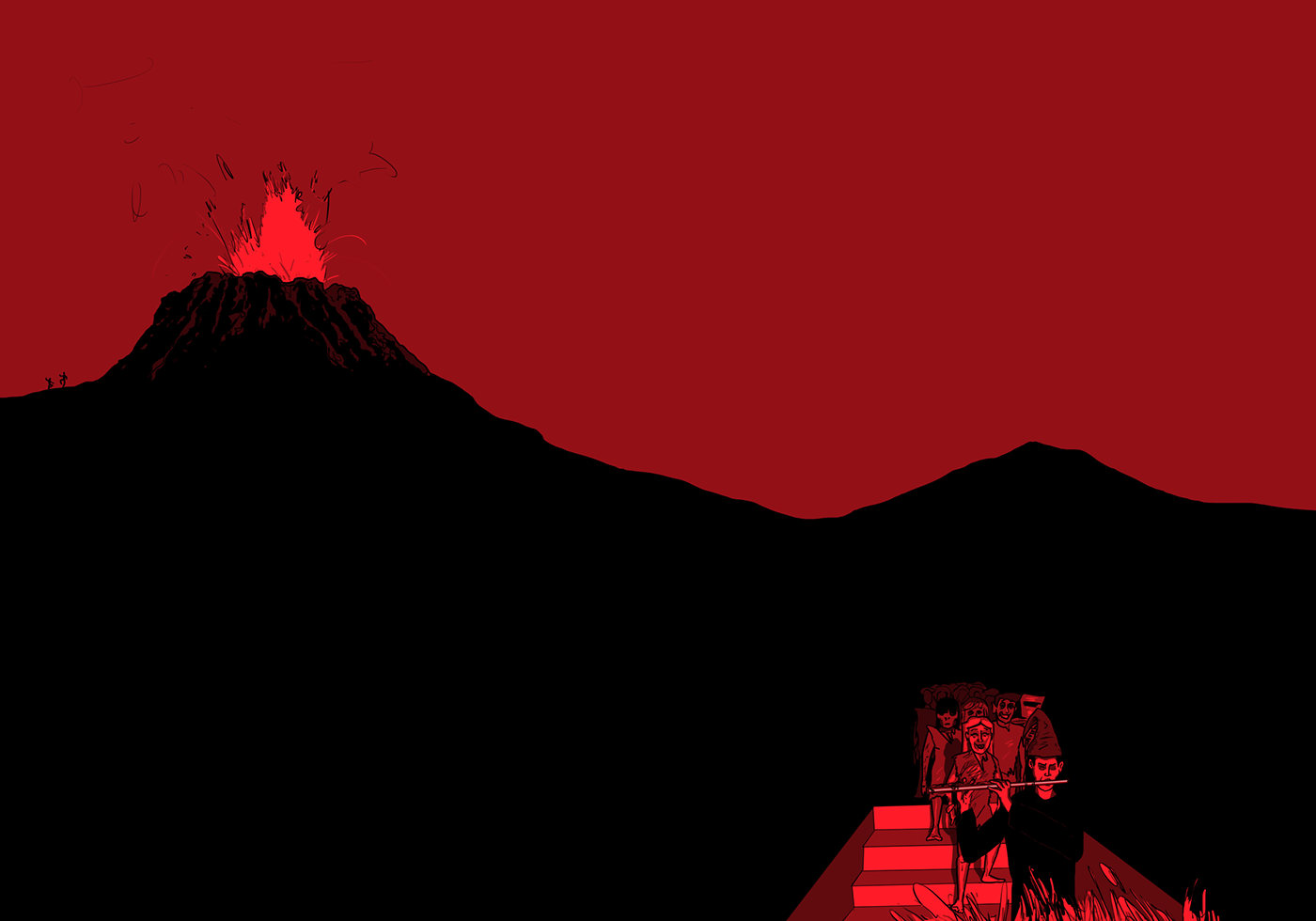
The saga of the GESM comes full circle as he, "The Pied Piper," leads his remaining worshipers underground. They are in rags, yet still gleefully follow him, ignorant to the end. The erupting volcano portends imagery of dragons and destruction, with the POV doing what they can to survive the night. Unlike Willow Farm, which only annoyed the POV with its reality-bending obstacles, everything within the apocalypse is real; the waking dream has become a living nightmare.

The second part of this section's title, which refers to "Gabble Ratchet," plays an integral role in understanding the imagery of the chase. As found on lyrics.wikia.com's entry on Supper's Ready (an incredibly helpful resource for the comic), "Gabriel's Hounds, also called Gabble ratchet. Wild geese. The noise of geese in flight is like that of a pack of hounds in full cry. The legend is that they are the souls of unbaptized children wandering through the air till the Day of Judgement." Following this, two geese break from their flock to chase the POV.

The demons, in their number and nature, create a parallel between the POV and Willow Farm respectively. They are an anti-POV, torturing the couple and toying with them as they flaunt a shapeshifting power that matches the Flower's control over Willow Farm. The difference here is that instead of being good-natured and surreal, these demons (and the terror they subject the POV to) feel grounded within the true end of the world. The forms they take are all allusions to Genesis songs, turning the imagination of the band against the POV.
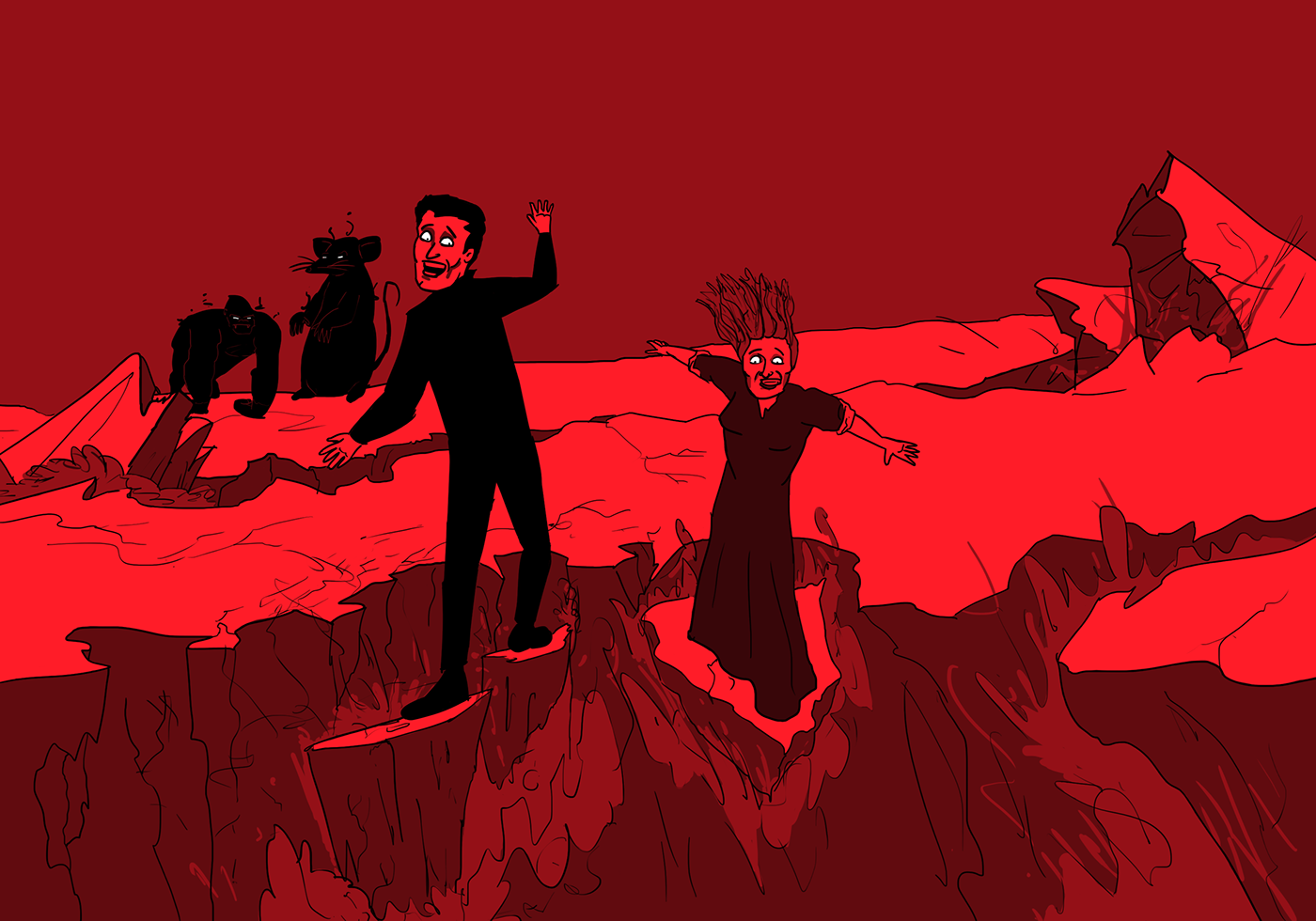
An earthquake (perhaps related to the earlier volcanic eruption) transports the POV down a scree and into rapids that lead them out to sea. The demons follow, shifting their form as they pursue, amused by their prey.

Rather than let them drown, the demons take the form of Canute and a black knight, causing the ocean waves to recede at the king's command. This is a direct reference to "Can-Utility and the Coastliners" off Foxtrot. The demons then take on a more sinister form and continue the chase on foot.
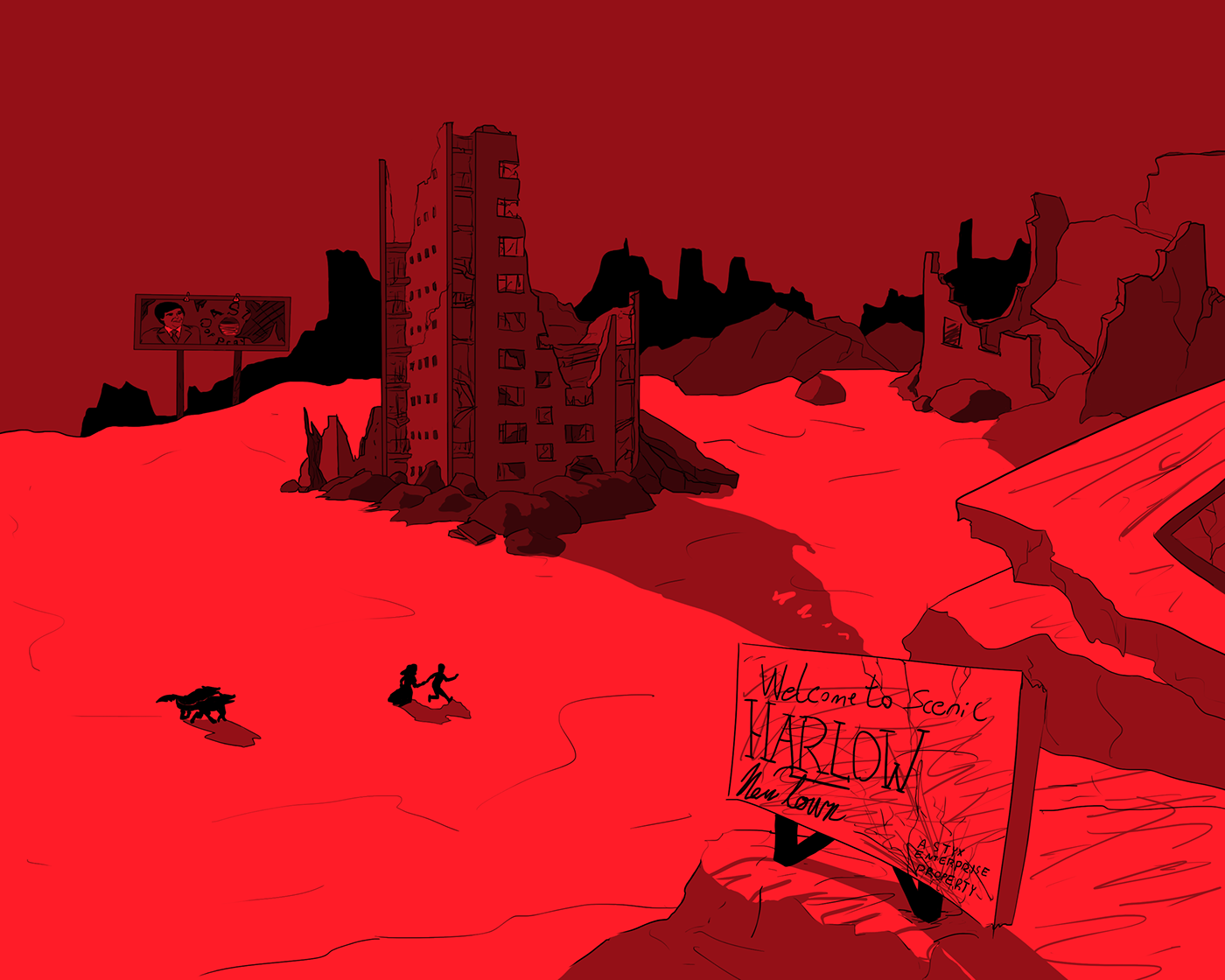
The POV flee into the ruins of Harlow New Town, a reference to "Get 'Em Out by Friday" off Foxtrot. As the end of that song describes its city in the distant future, this ruinous imagery clarifies just how much farther flung this section of Supper's Ready is set.

The demons appear to have the POV cornered, but are growing tired of their lopsided game. They disappear and reappear behind the POV in a new form.

With forms that are seductive and villainous respectively, the demons distract the POV from noticing the vines they have summoned, which leave the POV entangled and at the demons' mercy.
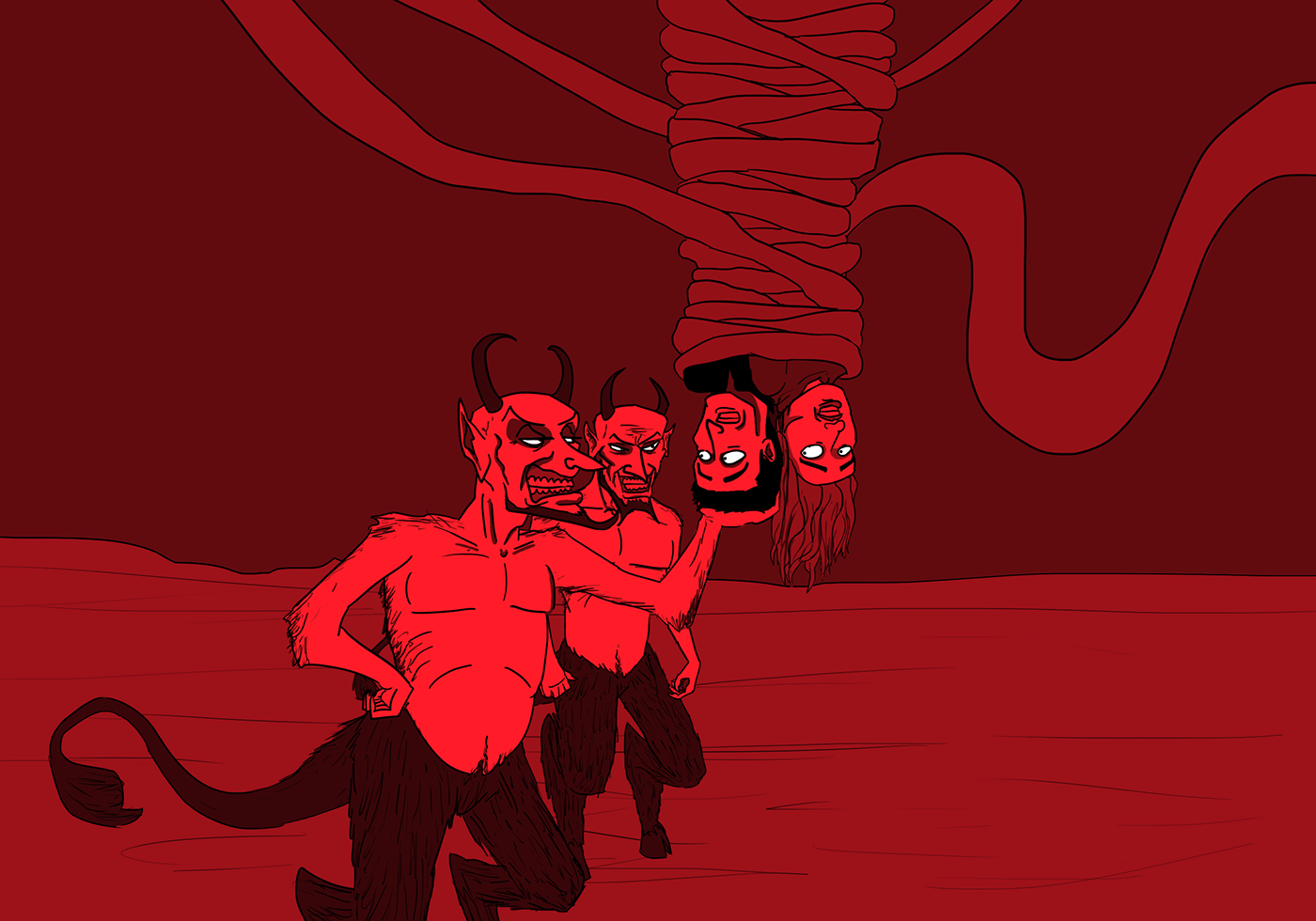
Their true, beast-like forms are finally revealed as the comic cuts to black and the instrumental reaches its final segment.
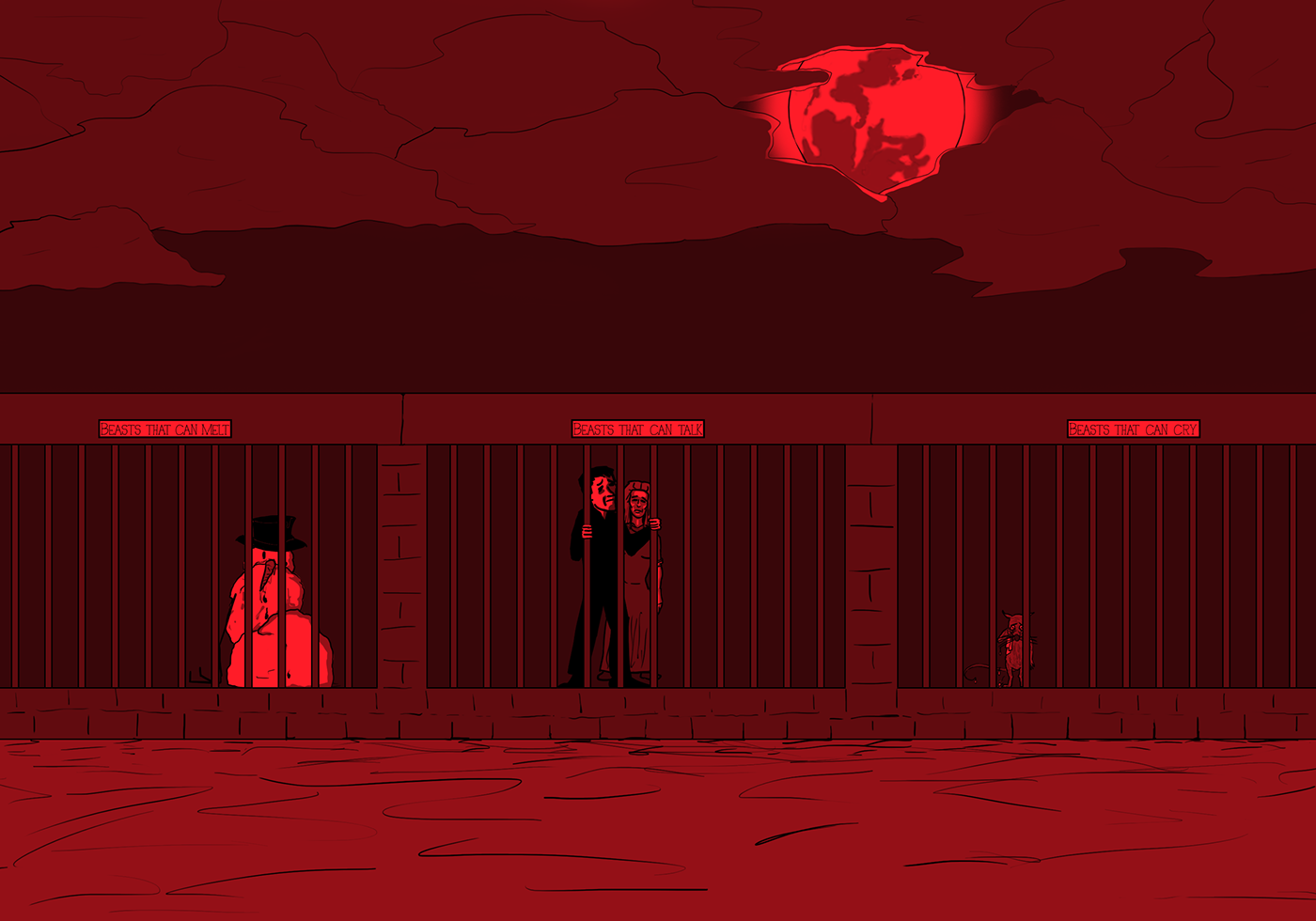
While confined to a cage, the POV are left helpless as the end approaches. They are in some sort of zoo, surrounded by other creatures full of the water of life. At the sound of footsteps, their captors leave the POV behind to go gather in anticipation of the coming of their leader.
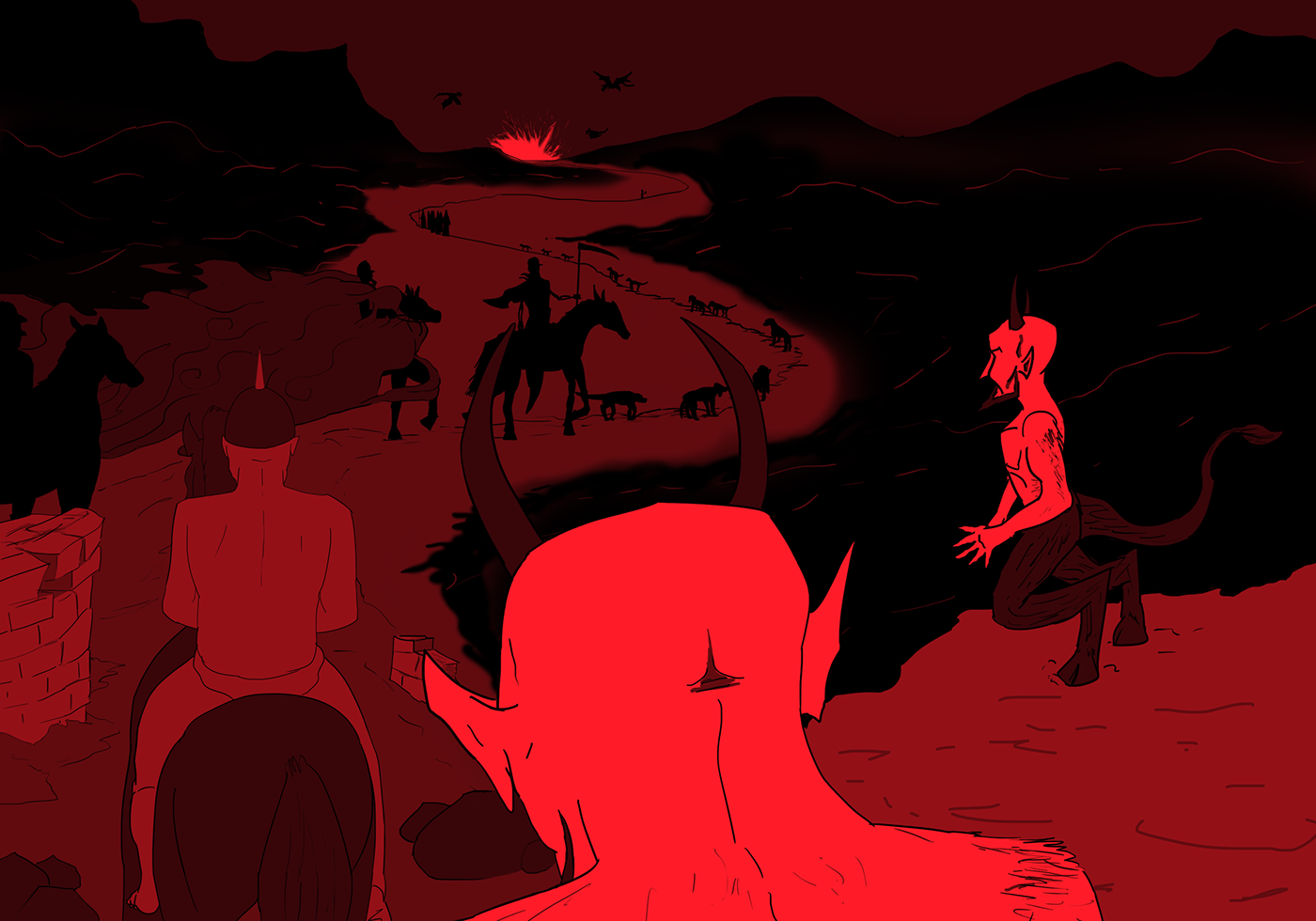
Through dips to black, I try to match the build-up Tony Banks achieves, with a real sense of dread emerging as evil amasses its power for its final moment of triumph.
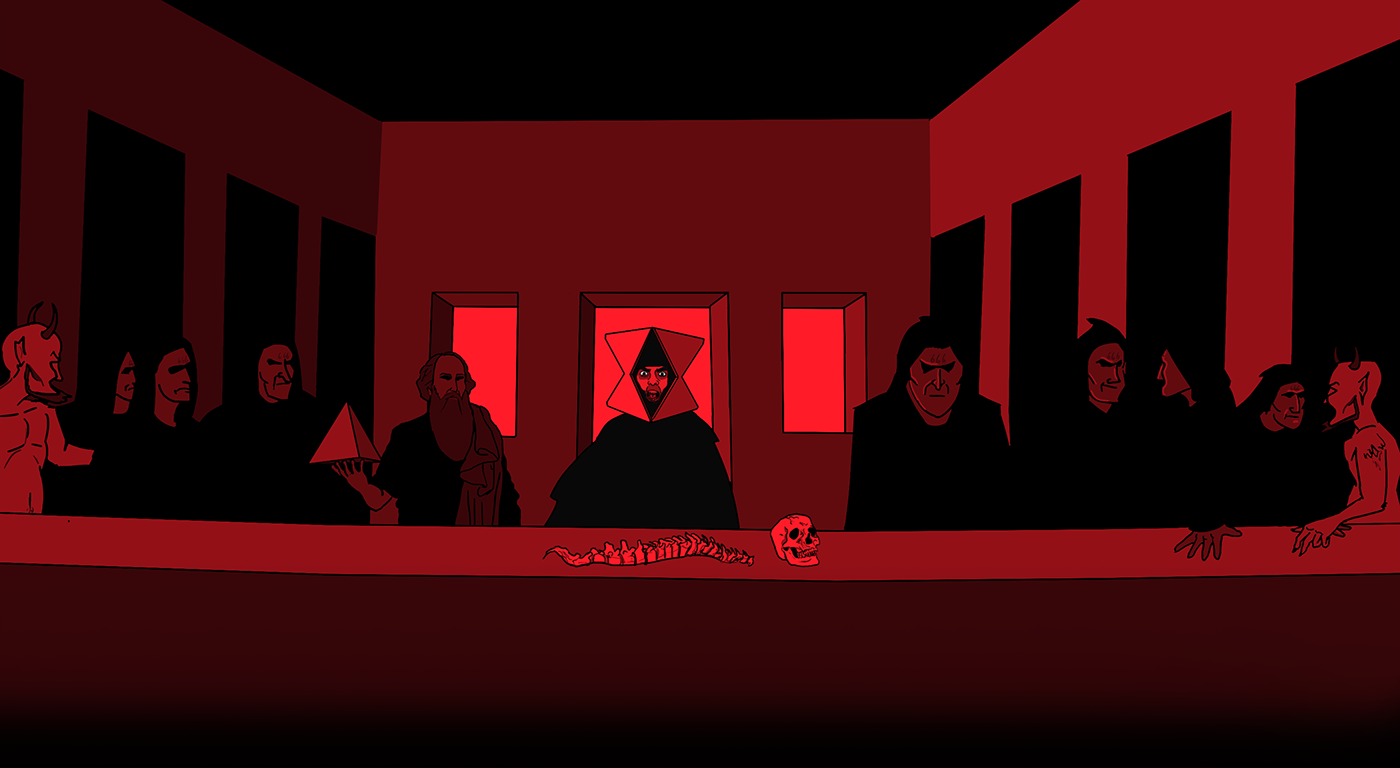
666 is revealed in the company of his apostles, conducting an anti-Supper in which only he is permitted to cannibalistically feast. His look is directly based on the Magog costume Gabriel would wear for this part of the song's live performance, as his most nefarious alter-ego seeks to usurp Gabriel's role as creator. Those present at his table reveal the unfortunate fate of the seven saintly men that appeared in the first section, with even the noblest spirits giving in to the corruption evil offers.
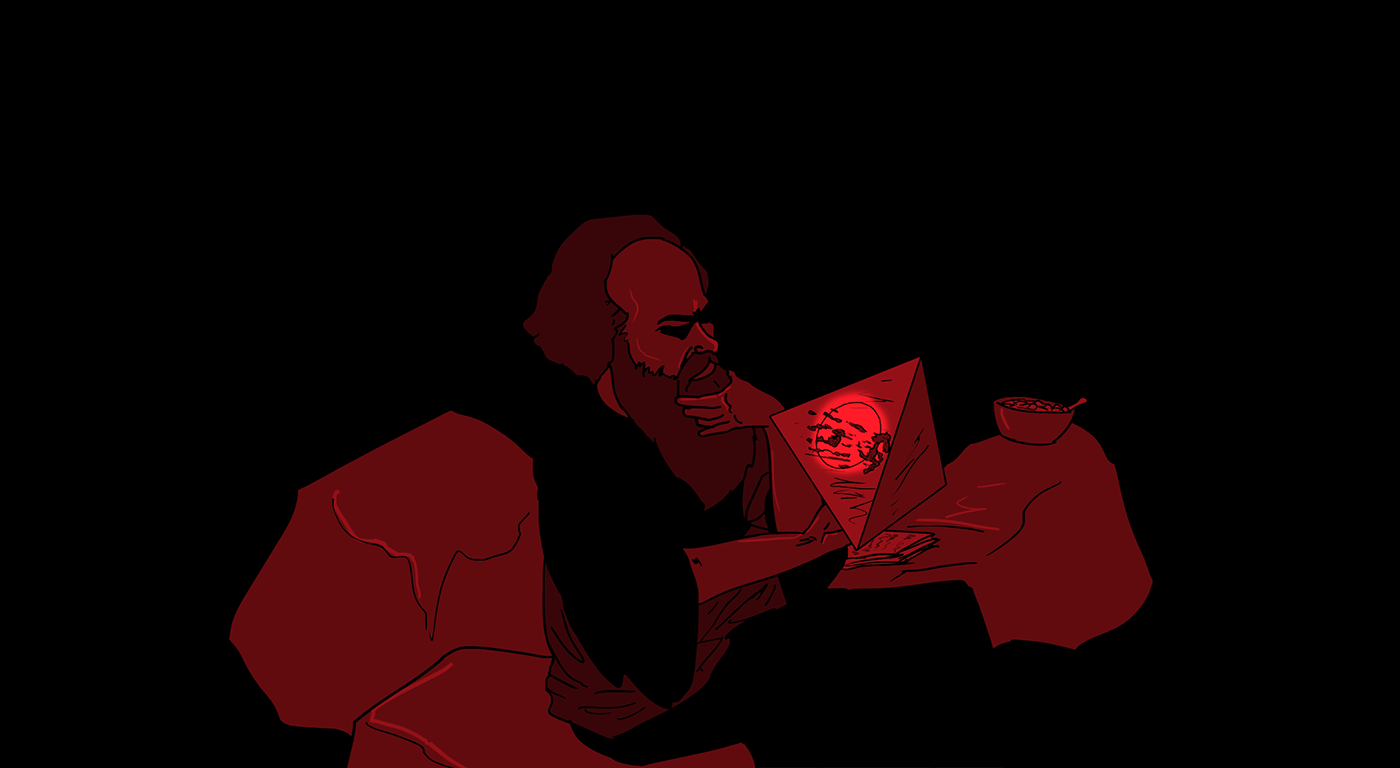
Pythagoras's inclusion is akin to Ikhnaton; another link in history between science, religion and the abusive will of cult leaders. Power corrupts and so on. So as 666 feeds on human flesh, Pythagoras leaves the table to perform his duty...
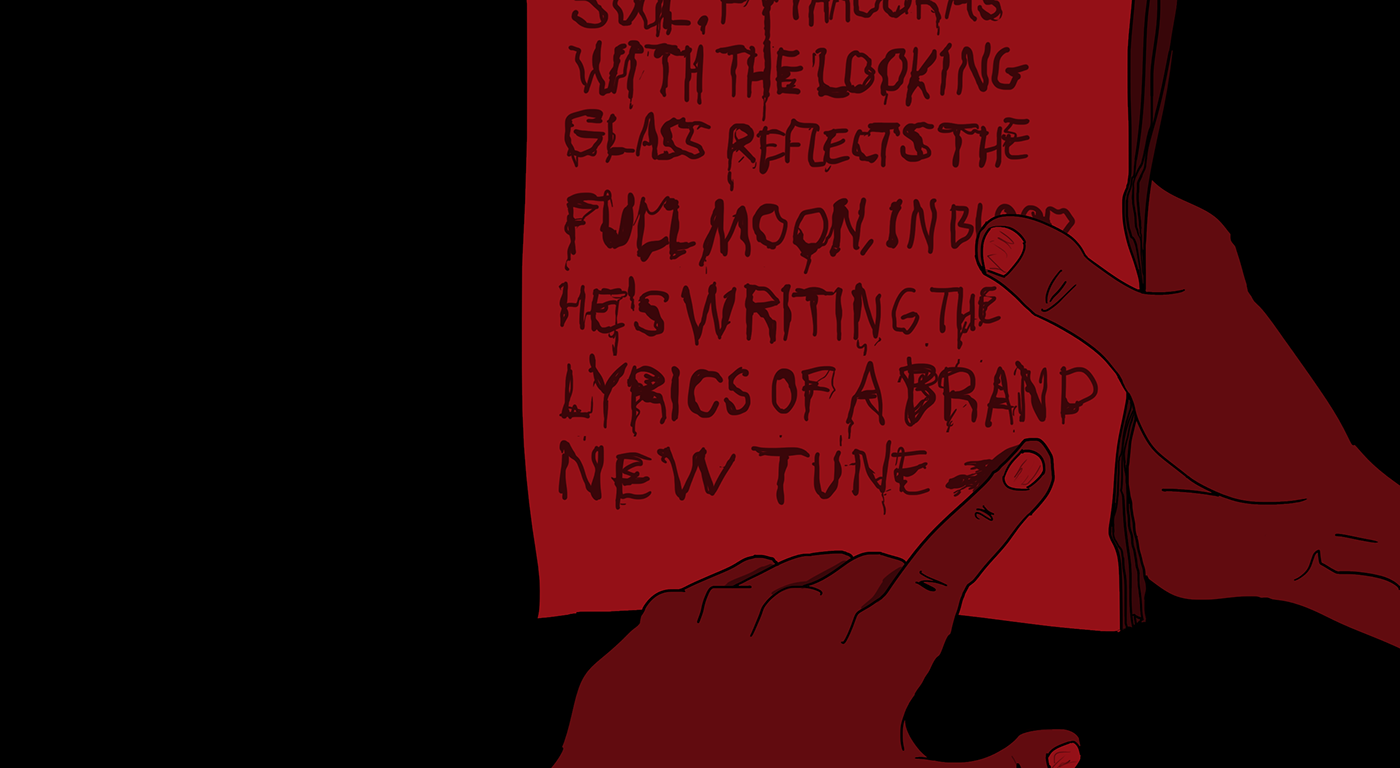
The meta nature of the song on prominent display during Willow Farm has been molded into something sinister here. The shades that make up this song are in open rebellion against their creators; with the "seven trumpets blowing sweet rock and rock" and Pythagoras "writing the lyrics of a brand new tune," they seek to usurp control from the musicians that created them, and in doing so destroy their own world. Instead of accepting the natural order of the song being played start to finish throughout the years, they wish to end the cycle and write themselves into their own world; a grander vision than the false prophet GESM was able to muster and a more chaotic vision than the Flower was able to imagine, their plan would truly bring about the end of the world, descending all who inhabit it into eternal darkness/nonexistence.
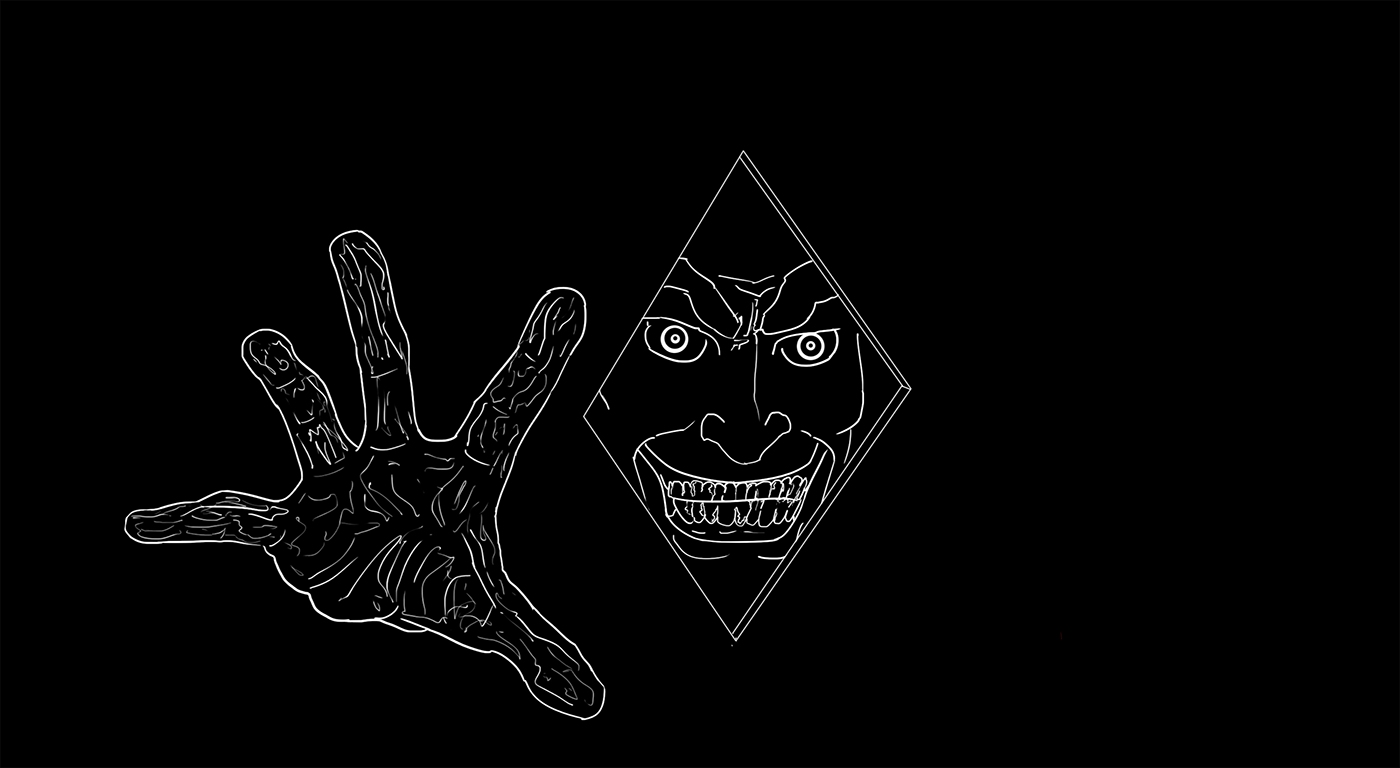
As it seems that victory is assured, 666 advances on the caged POV to end them (and with them, the world). The already dark palette of reds to descends to one nearly total black to match this sense of despair, and it seems our POV is trapped and doomed...

Interlude
But at the last second, the music breaks down and a reprise of flute beckons the POV's salvation into the light. The bell at the end of this section reminded me of the brilliant use of a similar bell in Disney's adaptation of "Night on Bald Mountain" during their film "Fantasia." As that demon's reign is ended by the dawning of the new day, so too is 666 thwarted by the indestructible modality of hope.
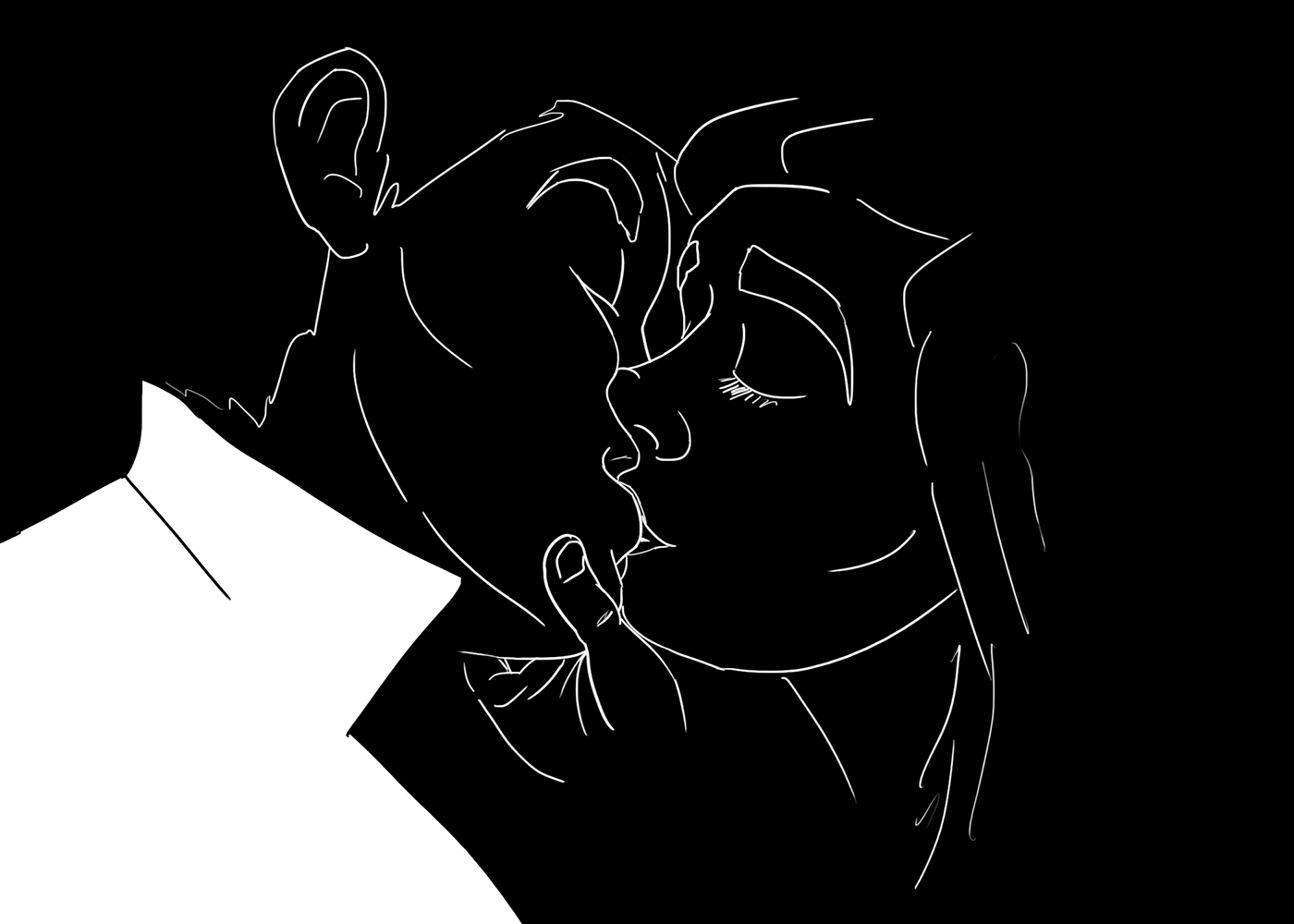
The POV seal this hope with a kiss, and just as Gabriel would shed his Magog outfit in a flash charge of light to reveal an all-white ensemble underneath, so too does the male's outfit change to white at the moment of his lover's embrace.
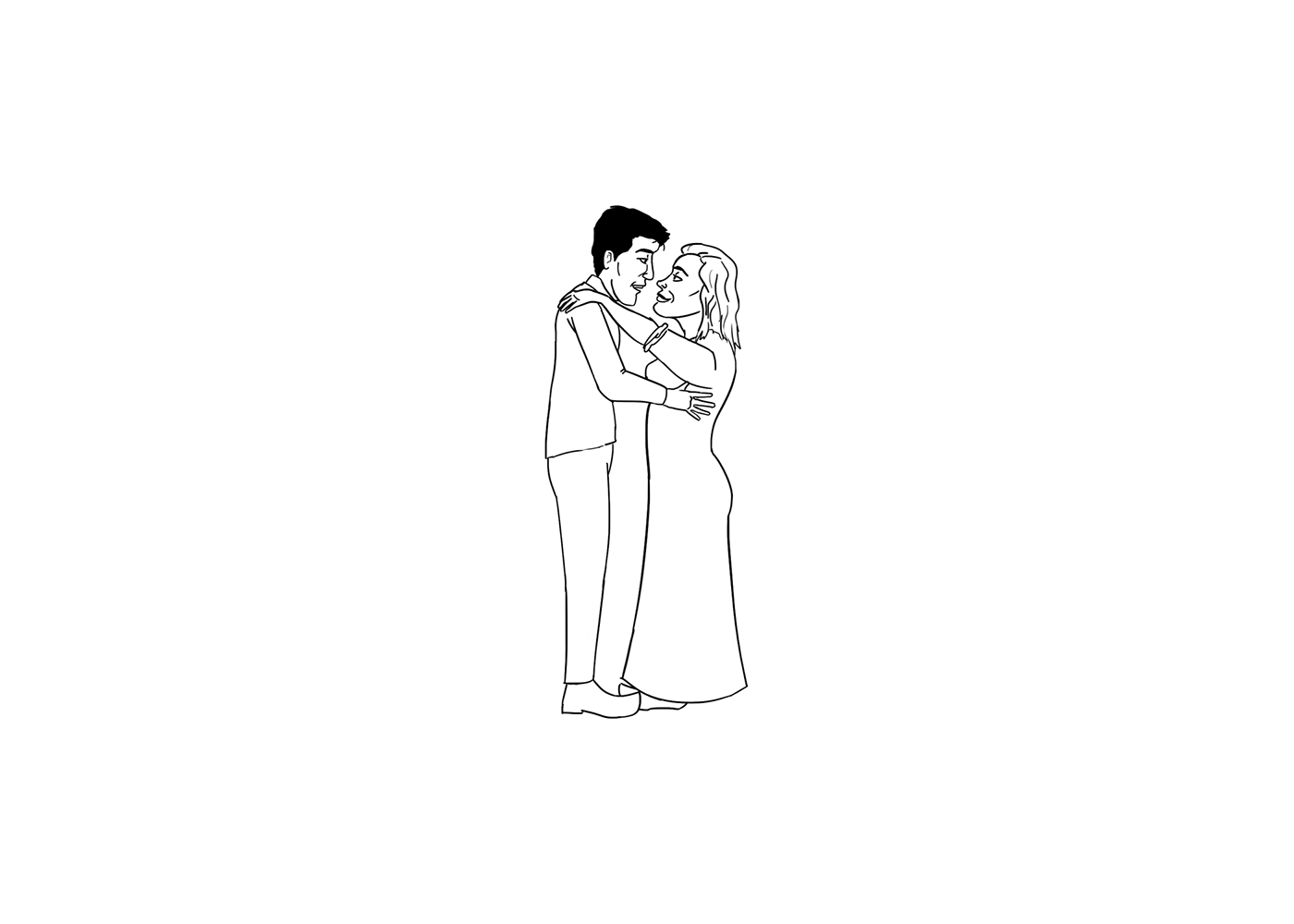
VII: As Sure As Eggs Is Eggs (Aching Men's Feet)
After the red and black of the last section, the finale's blinding white declares the final victory of good over evil, alongside the epiphany that this fate for the world is "as sure as eggs is eggs." While making the ends of the song's circular structure meet, the title playfully writes it as "aching men's feet," which is justified by how strenuous this journey has been on the POV. Their reprise of the first section shows a sort of doubling back as well as up; rather than simply making a closed loop, the two have journeyed around the spine of an upward spiral.

The foe is vanquished "in the darkness of the fading night," and from here the POV are "freed to get back home", secure in their love and their spirit.
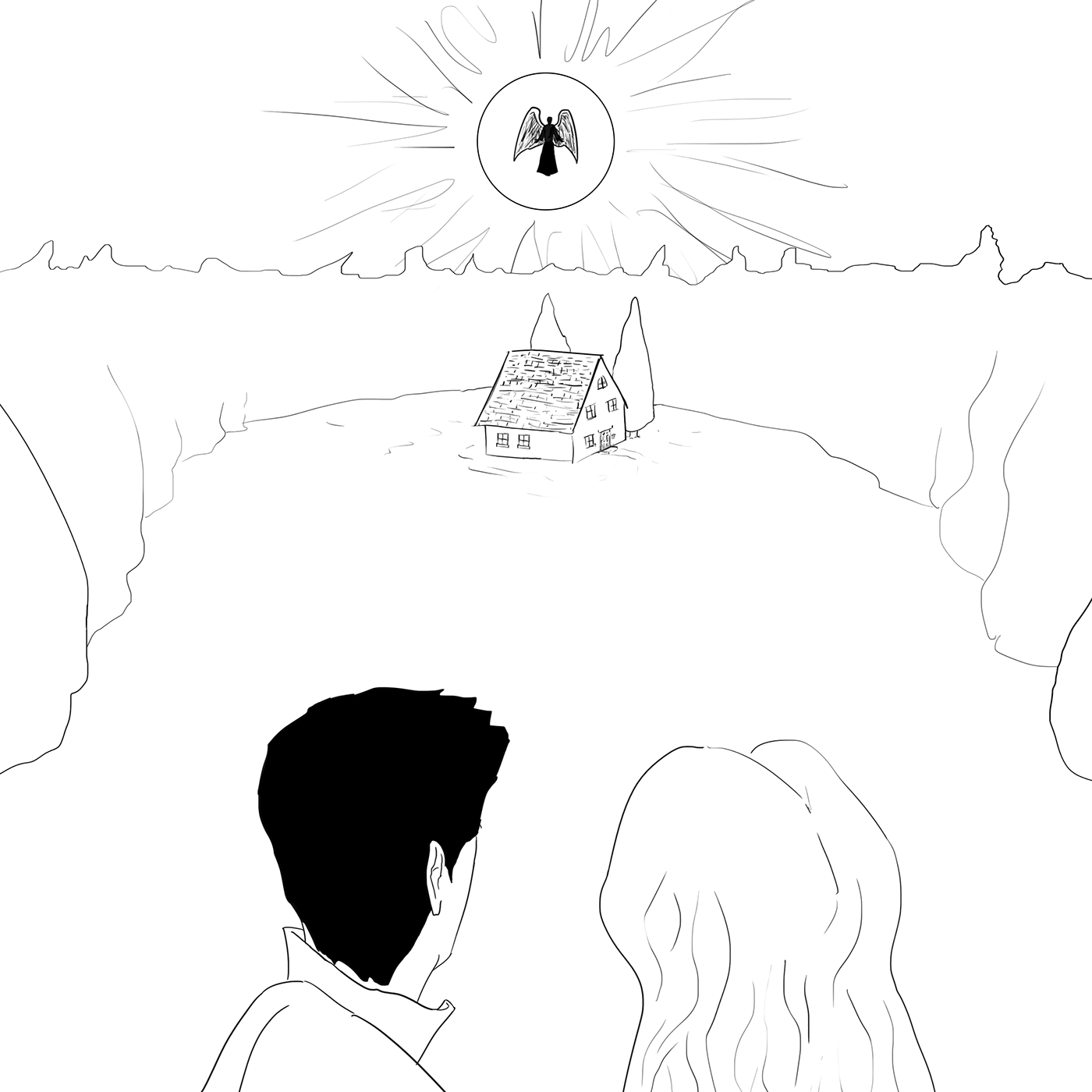
This section's lyrics draw heavily from the Bible, but its message of holding onto faith in the good of the world and its connection of spiritual enlightenment with romantic love is something that transcends a singular religion. The "Angel standing in the sun" announces the last supper of the song, calling the POV to finally return home.

Inside, they find "the Supper of the Mighty One," a generous and lavish bounty that contrasts the anti-Supper of 666 as well as the simple supper from the first section. The POV never consume any of the food, for like their physical endurance during this journey, it is simply a manifestation of their spiritual strength, as abstract quantities are given solid form and balance is restored to their world.
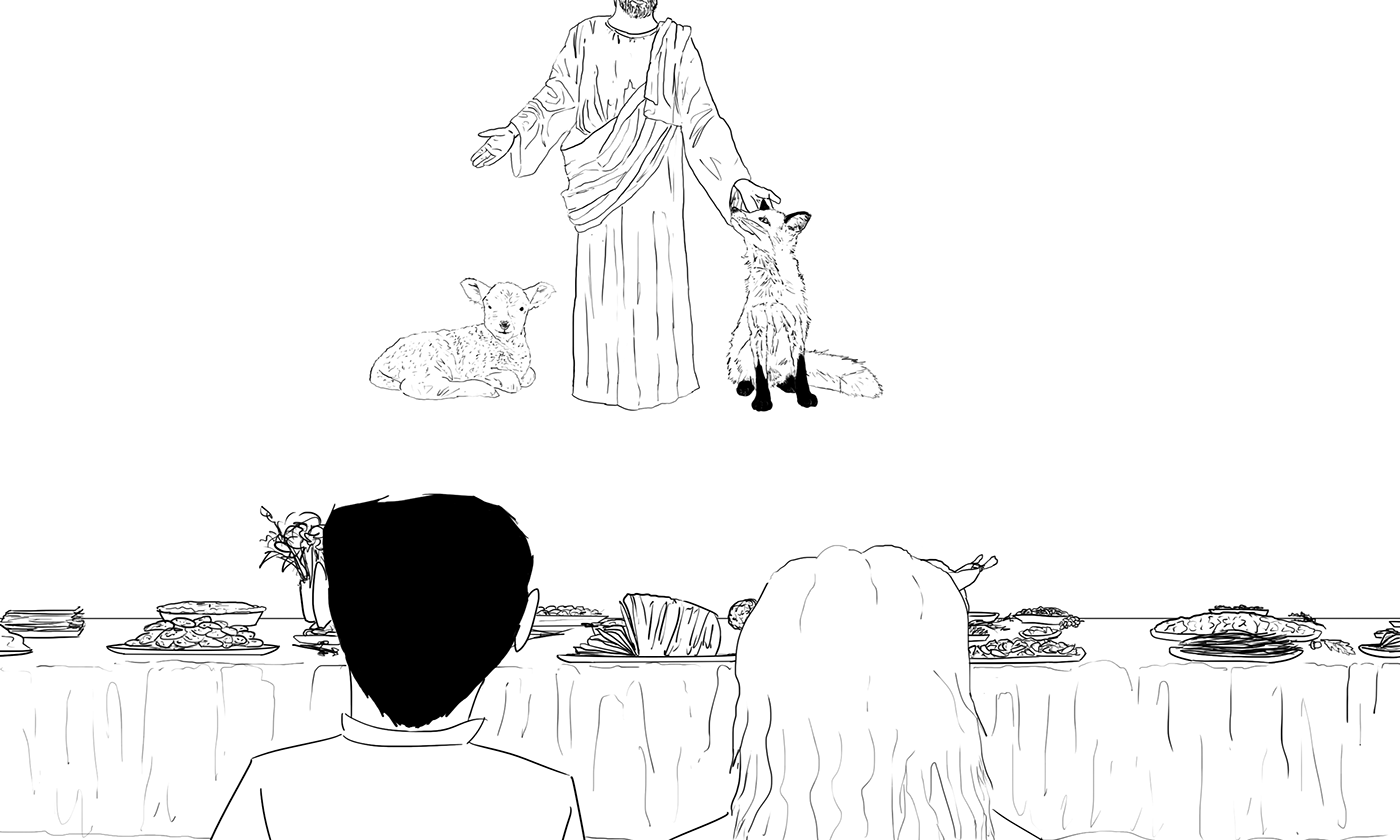
With the "Lord of Lords, King of Kings," I purposely obscure his face to reach for the deeper spiritual meaning of a messiah, but his beard may give a hint to his identity within the comic. The messiah of any faith must act as the bridge between the physical and spiritual realm, shown here through the revived Fox (the physical embodiment of the song, as well as the whole album) and the Lamb (a spiritual successor to Supper's Ready on a grander scale). So while giving the song's narrative its due end, the comic also projects a link between where Supper's Ready would take Genesis further down the road. Each work in an artist's life can act as a synecdoche for their oeuvre when the whole is understood.
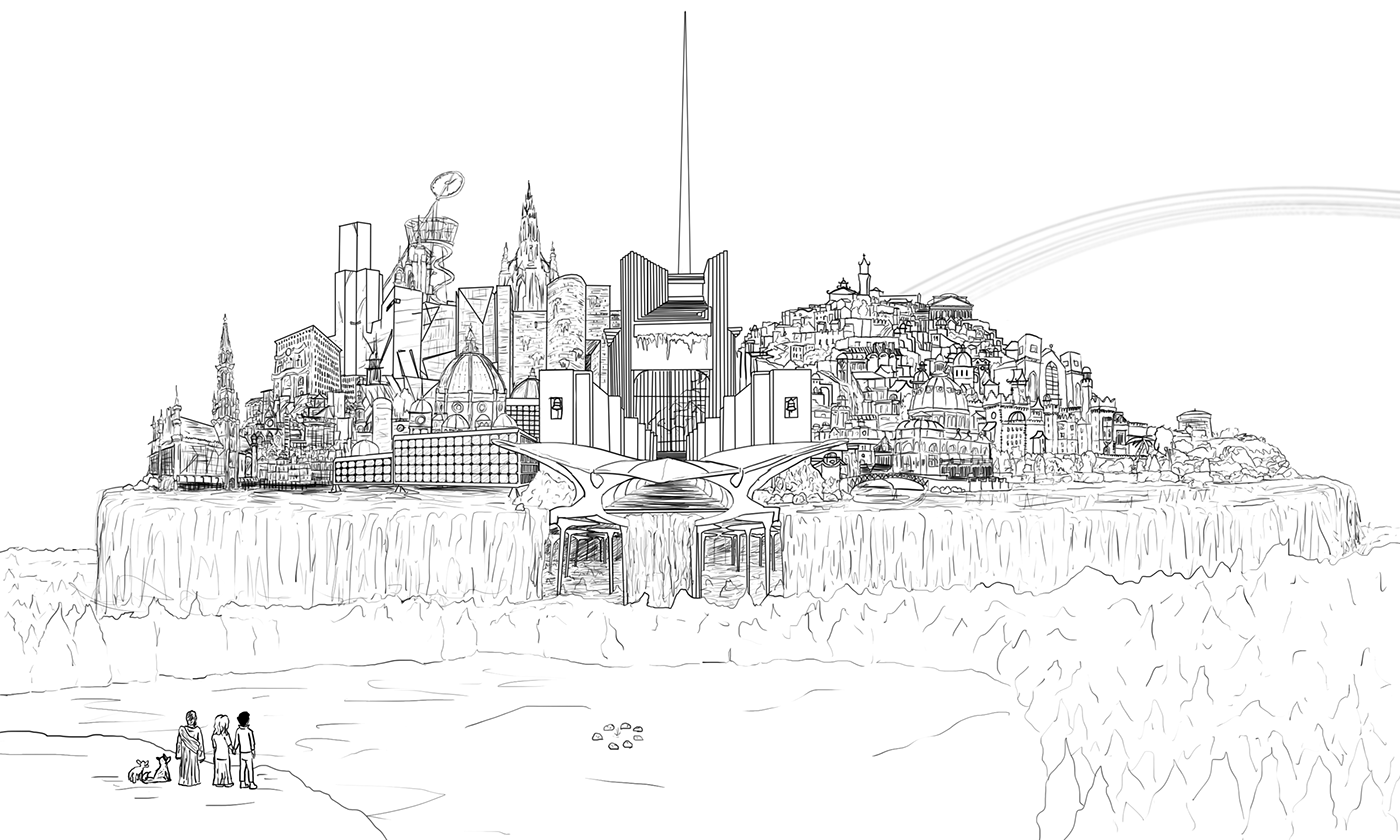
In this final grand image, my training as an architect comes through to imagine what the New Jerusalem may look like. Similar to our world's Jerusalem, this one has an old and new city (right to left, like Hebrew text), but among each are landmarks that transcend their time through the beauty of tectonic form. I built it around 26 different architectural elements that have had a professional and personal influence on my life and work. Some are monuments that one may easily recognize, while others are so personal that I doubt almost anyone would identify it. Heaven/paradise/nirvana/whatever you wish to call it is a reflection of the individual's mind, and since the POV are my creation (as I drew them), they share my vision.

As their spiritual journey comes to an end, their love has held steadfast and true. In their faith in the world and in each other, they drift upward towards their new home in the sky, ascending to a higher plane of existence and a higher plane of love (at least until the song is played through again).
The End
If you made it through the entire video and/or read through my explanation of my work and thought process, I hope you enjoyed what you saw/read. I feel Supper's Ready is one of the greatest and most audacious pieces of modern music ever recorded, and any way that I can help share it with others is a mitzvah in my book. Thanks for watching!
